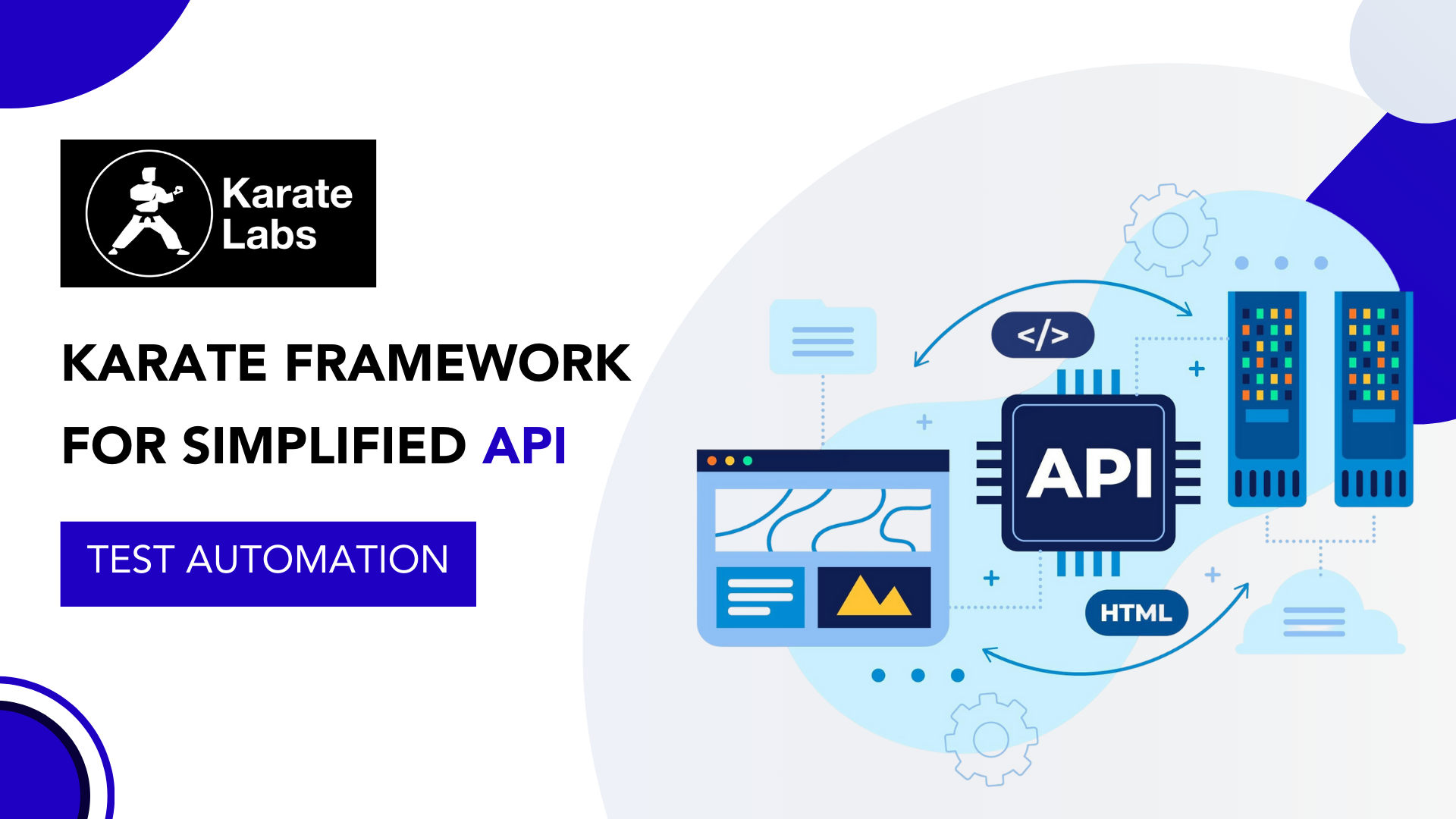
by Chris Adams | Mar 15, 2024 | API Testing, Blog |
Postman is one of the most popular API testing tools and it can perform both manual and automated API testing. So it is a great choice for beginners who are just getting started with API testing to take the first step with manual testing and gradually move towards automation testing. Moreover, Postman has recently introduced Postbot which is an AI assistant within Postman that can make your testing process easier. But in this blog, our primary focus will be on Postman API Automation Testing. Before we get started, let’s list out all the reasons that make Postman a great choice.
Why use Postman for API Automation?
Being a leading automation testing company, we have used many tools for API automation testing and have found Postman to be a great choice due to the below-listed reasons. It actually streamlines the process of API automation by providing a unified platform for designing, testing, and monitoring APIs, thus improving the efficiency and reliability of API development and maintenance.
User-Friendly Interface: Postman offers an intuitive and user-friendly interface, simplifying API work for developers and testers, without requiring extensive coding.
Testing Capabilities: Postman allows you to easily create and execute automated tests for your APIs, including functional, regression, and load testing. You can define test scripts using JavaScript, which offers flexibility and power in crafting test scenarios.
Collections: Postman allows you to organize your API requests into collections, making managing and sharing them with your team easier. Collections can be exported/imported, facilitating collaboration and version control.
Environment Variables: Postman lets you define environment variables, which can be used to parameterize your requests and make them more dynamic. This is particularly useful for testing different environments (e.g., development, staging, production) with the same set of requests.
Pre-request and Post-request Scripts: Postman enables you to run scripts before and after sending requests, allowing you to set up test conditions, manipulate data, or perform cleanup actions.
Integration with Continuous Integration (CI) Tools: Postman can be integrated with CI/CD pipelines, enabling automated testing as part of your development workflow. This ensures that API changes are thoroughly tested before deployment.
Monitoring and Reporting: Postman offers features for monitoring APIs in production, including real-time monitoring, performance testing, and generating reports on API health and performance.
Extensive Documentation: Postman provides comprehensive documentation and resources, including tutorials, examples, and community support, making it easier for users to get started and troubleshoot issues.
Postman API Automation Testing
To ensure you understand the automation testing process without any doubts, we have used a sample scenario where we use all 4 CRUD operations. We have also explained how to run a collection on the whole and generate reports as well.
Create a Collection & Requests
A collection and subsequent requests have to be created first by following the below steps before we get started with Postman API Automation Testing.
- First up, launch Postman and click on the ‘Create Collection’ button and give a name to the collection eg: API Demo.
- Now we have to add requests to the collection we created by clicking the three dots in the top right corner.
- Click on ‘Add request’, enter the name of the request, and click the Save button to create a (POST) request named “Create User”.
- Similarly, create a few more requests “Get user details”(GET), “Update user details”(PUT), and “Delete User”(DELETE).
- After creating the collection with CRUD operations, we have to add a URL and request content for each operation.
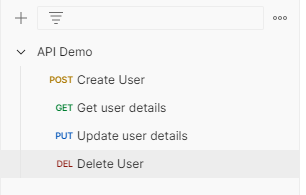
Create User
In the “Create User” request, select the POST request method and enter the URL you want to test. In our blog, we have used https://gorest.co.in/public/v2/users. An authentication token has to be added for the above-mentioned API. It can be done so by clicking on the collection name ‘API Demo’ to view the below screen.
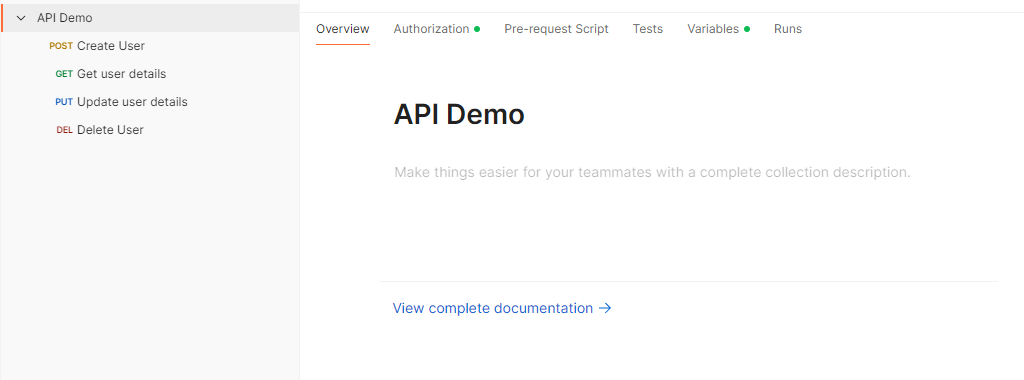
Click on the ‘Authorization’ tab, select the type as Bearer token, and place your token value in the token field
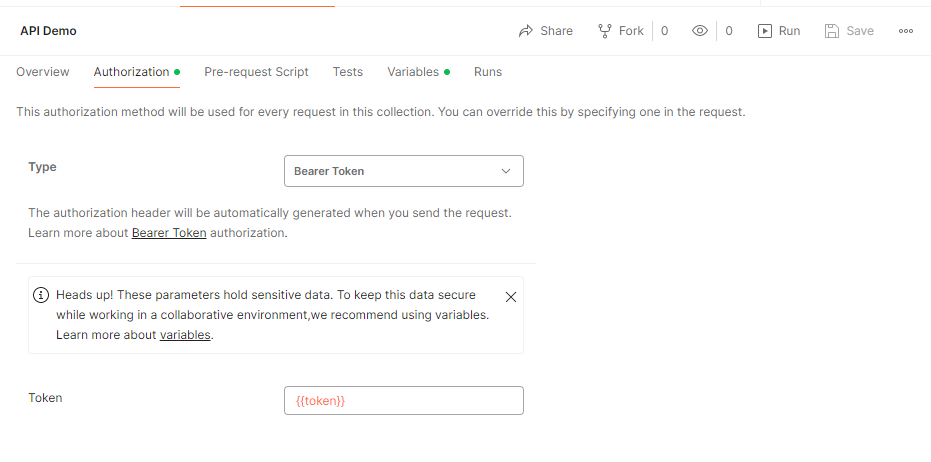
In Body, select raw, select JSON format, and enter the following request body:
Request Body:
{
"name": "QA Test",
"gender": "Male",
"email": "[email protected]",
"status": "active"
}
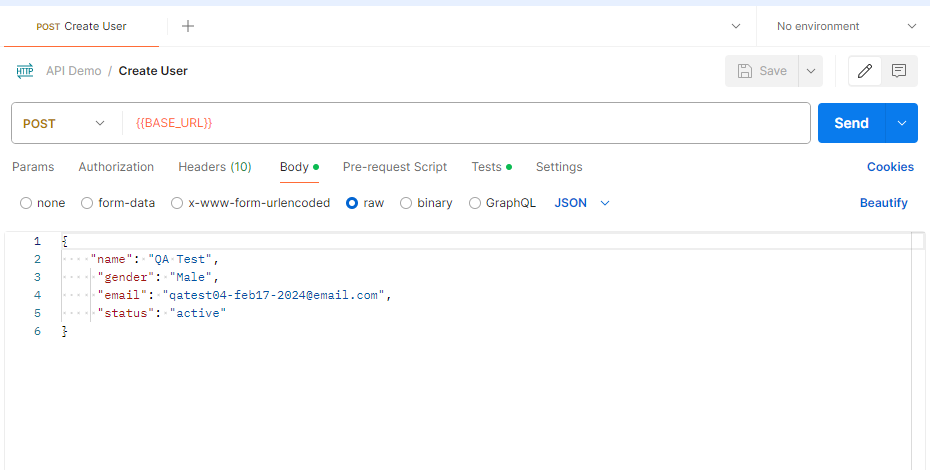
Now we have to add the test scripts as shown below to verify the response results by clicking the ‘Tests’ tab.
Test Script:
pm.test("validate status code", function ()
{
pm.response.to.have.status(201);
});
pm.test("Validate response data", function()
{
var data = pm.response.json();
pm.expect(data.name).to.equal("QA Test");
pm.expect(data.email).to.equal("[email protected]");
pm.expect(data.gender).to.equal("male");
});
Once you click on the “Send” button, you will see the response body for the above-mentioned scripts. You can then validate the response with the expectations and click the “Save” button to save the request.
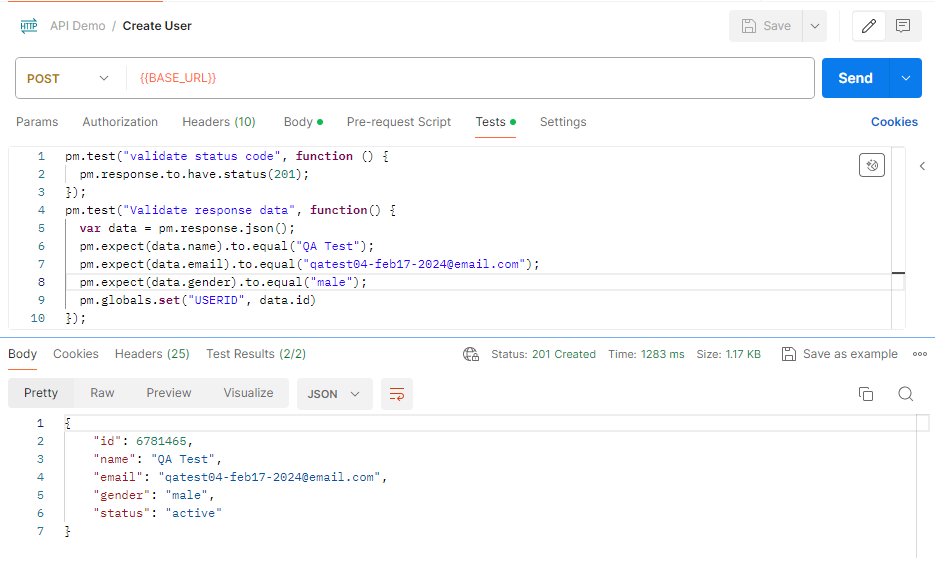

Get User Details
In the Get user details request, we have to construct the URL using global variables by adding BaseURL and UserID. Global variables serve as general-purpose variables and should be used sparingly, primarily for rapid prototyping needs. They are accessible to all requests within the Postman environment, regardless of the collection they belong to.
To get particular user details, we may need to pass the User ID as a variable, in Postman it is known as “Globals”.
You can create variables by selecting Environments – > Globals as shown below,
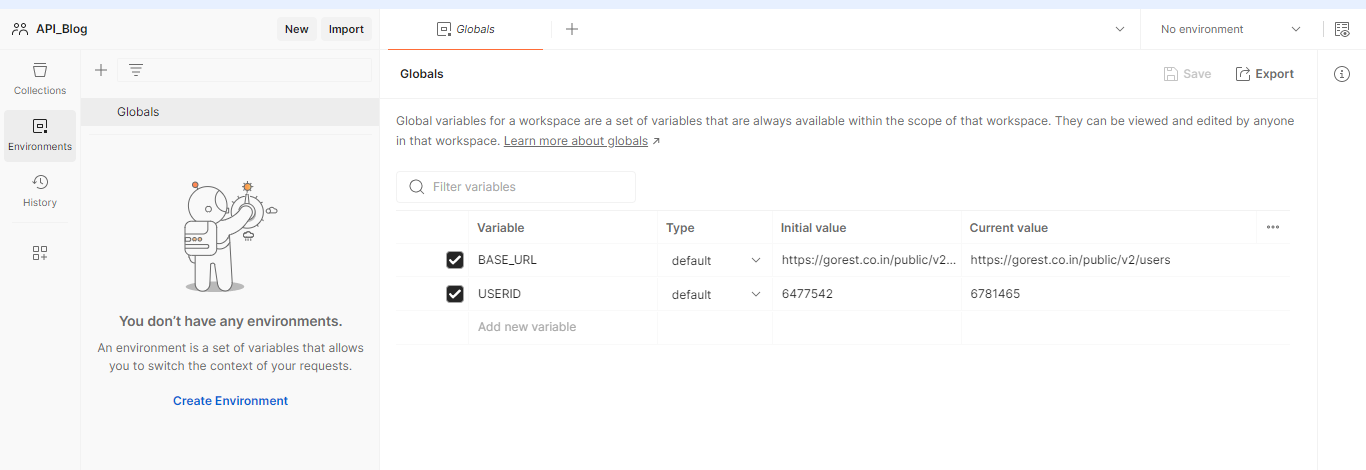
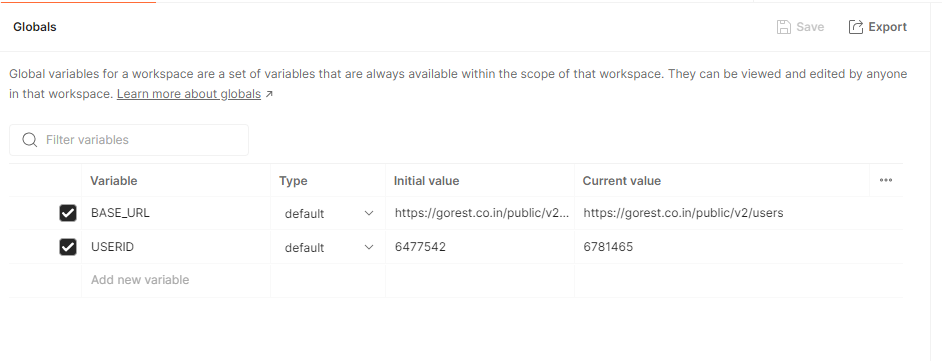
Now when we select the GET request method and URL as “{{BASE_URL}}/{{USERID}}”, the values will be fetched from global variables. As seen previously in our Postman API Automation testing blog, we have to write test scripts for response body validation in the tests tab as shown below.
Test Script:
pm.test("validate status code", function ()
{
pm.response.to.have.status(200);
});
pm.test("Validate response data", function()
{
var data = pm.response.json();
var userID = pm.globals.get("USERID")
pm.expect(data.id).to.equal(parseInt(userID)); // Parse userID to integer for comparison
});
After verifying all the details once, click on the Send button will see the response body for the above-mentioned scripts.
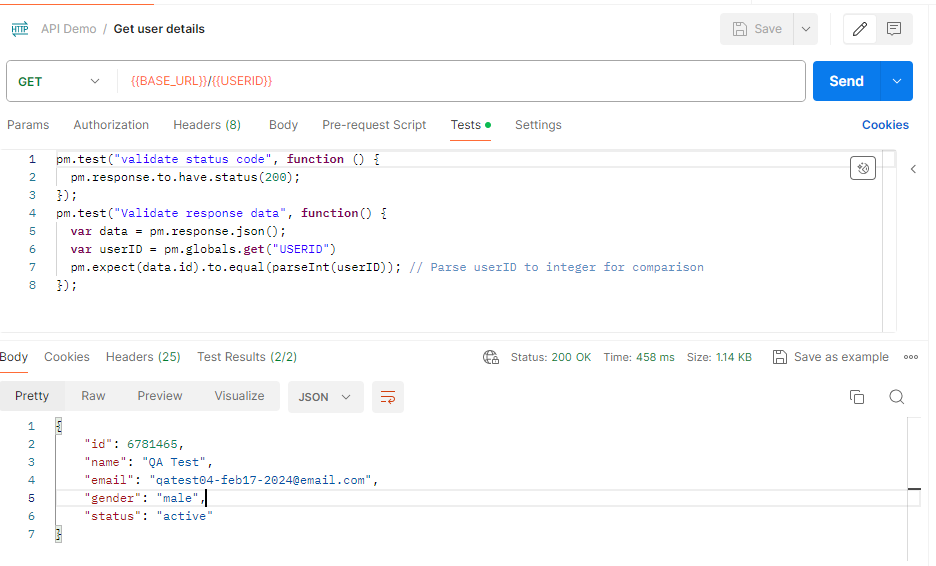

Update User Details
Let’s see how we can validate the details that have been updated. In our example, let’s update the username from QA Test to “QA Test001”. In the Update user details request, select the PUT request method and enter the URL as “{{BASE_URL}}/{{USERID}}”
We will update the username to, in the request body update the value, and send the request as mentioned below
Request Body:
{
"name": "QA Test 001",
"gender": "Male",
"email": "[email protected]",
"status": "active"
}
Test Script:
Write a script to validate if the updated username is reflected in the response body
pm.test("validate status code", function () {
pm.response.to.have.status(200);
});
pm.test("Validate response data", function() {
var data = pm.response.json();
pm.expect(data.name).to.equal("QA Test 001");
});
Click on the “Send” button and you will be able to see the updated response body
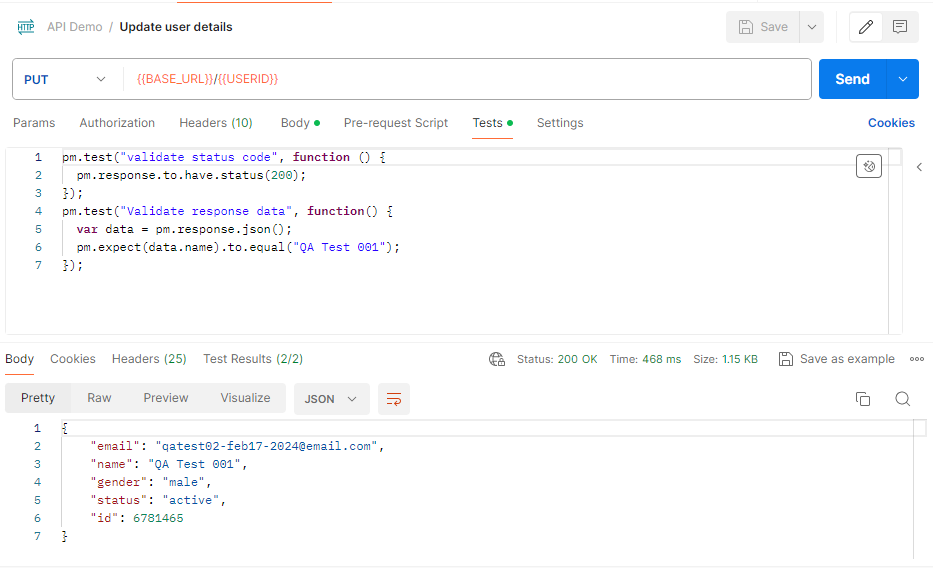
Delete User
So far in our Postman API automation testing tutorial, we have created the user, validated the response, got user information, and validated the response again. Now it’s time to delete the user.
In the Delete User request, select the DELETE request method, for the URL we have the BaseURl and userId already saved in our collection variables, let’s use it directly for the delete user request
Test Script:
pm.test("status code is 204", function ()
{
pm.response.to.have.status(204);
});
Please note that no response body will be displayed for delete requests. So we just have to verify the status code above and click the Send button
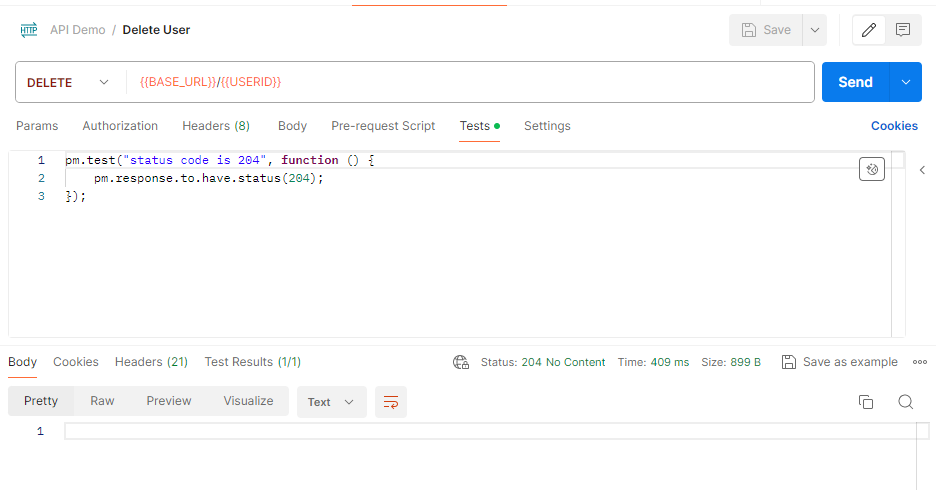
Collection Runner
We have seen how to run individual requests so far and will be focusing on how to execute a specific collection directly in our Postman API automation testing tutorial. Postman offers a built-in feature known as the Collection Runner within the Postman interface for this very purpose. You can click on the three dots next to your collection and select “Run Collection” to initiate the process.
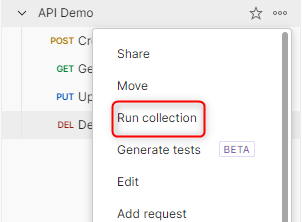
Postman’s API automation testing also supports scheduling features that allow you to automate the execution of collections at specific times or intervals. Here’s a brief overview:
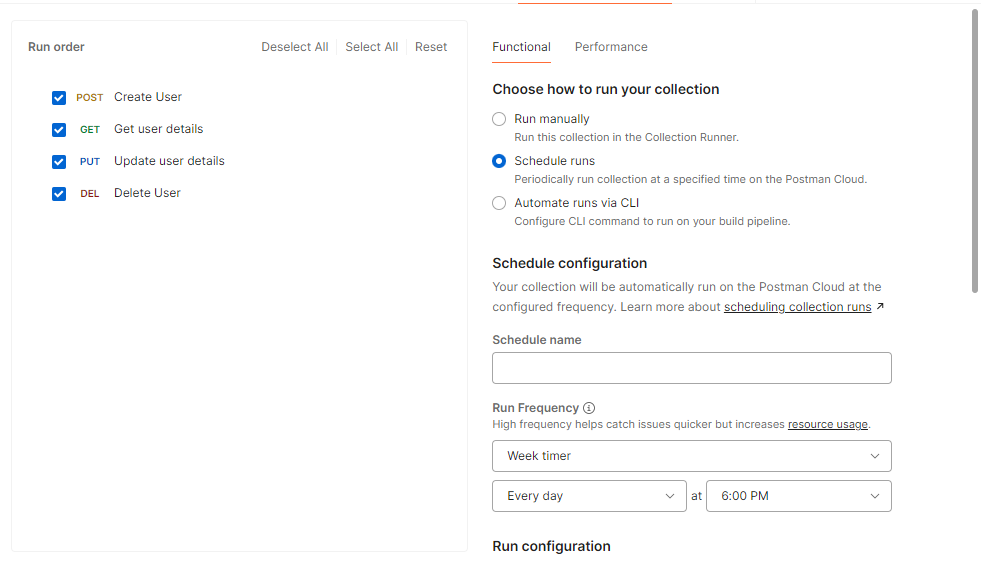
Setting Up a Schedule: You can create a schedule by navigating to the collection runner, selecting the collection you want to schedule, and then clicking on the “Schedule Runs” button. From there, you can configure the schedule according to your requirements.
Configuring Schedule Parameters: Postman allows you to specify parameters such as the frequency of runs (e.g., daily, hourly), start date and time, and time zone. You can also choose to run the entire collection or select specific folders or requests within the collection.
Monitoring Scheduled Runs: Once a schedule is set up, you can monitor the status of scheduled runs from the Postman dashboard. You’ll be able to see information such as the last run time, the next scheduled run time, and any run failures or errors.
You can also run it manually by clicking on the ‘Run Manually’ option

Once the tests have been executed for the collection, you will be able to see the results as shown below.
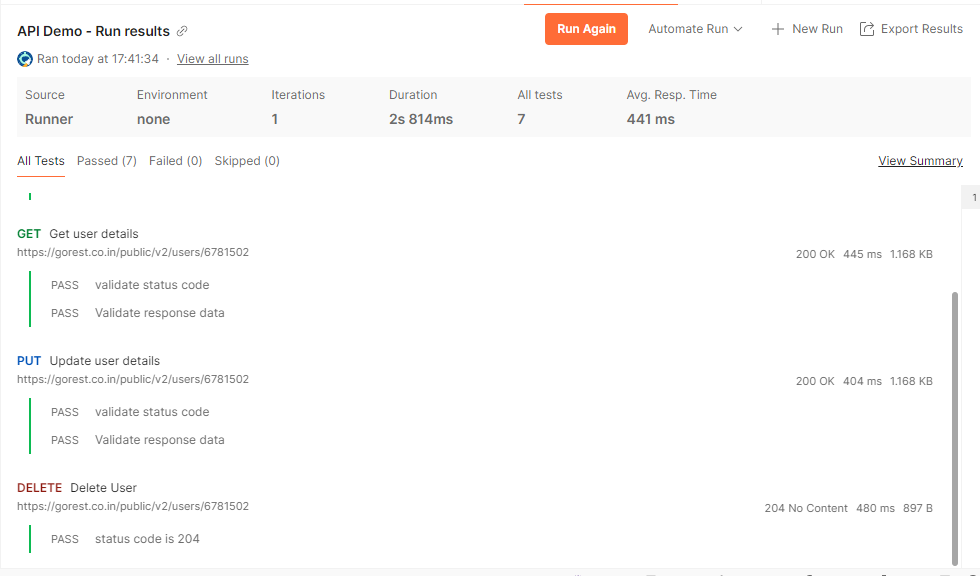
Newman CLI Reporting
As we have seen how to perform all the required tests, let’s see how we can create effective reports in Postman using Newman. Newman is a CLI tool that enables running collections directly from the command line interface. It can be achieved if it’s integrated into a CI/CD pipeline remotely or executed locally on your CLI. You can download Newman from NPM.
After installation, you’ll have to export both your collection and global variables. Let’s see how to do that in our Postman API Automation testing tutorial.
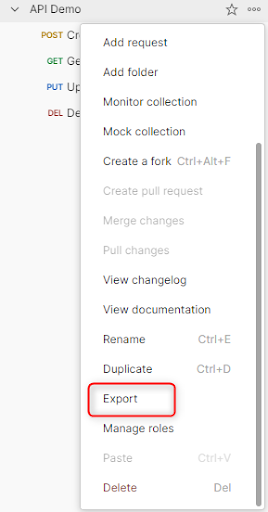

Navigate to the directory where the collection is exported in your CLI and execute the below command
newman run collection name.json --globals global variable name.json --env-var "token=YOUR_BEARER_TOKEN"
Once you execute the above command, you will be able to see a report as shown below.
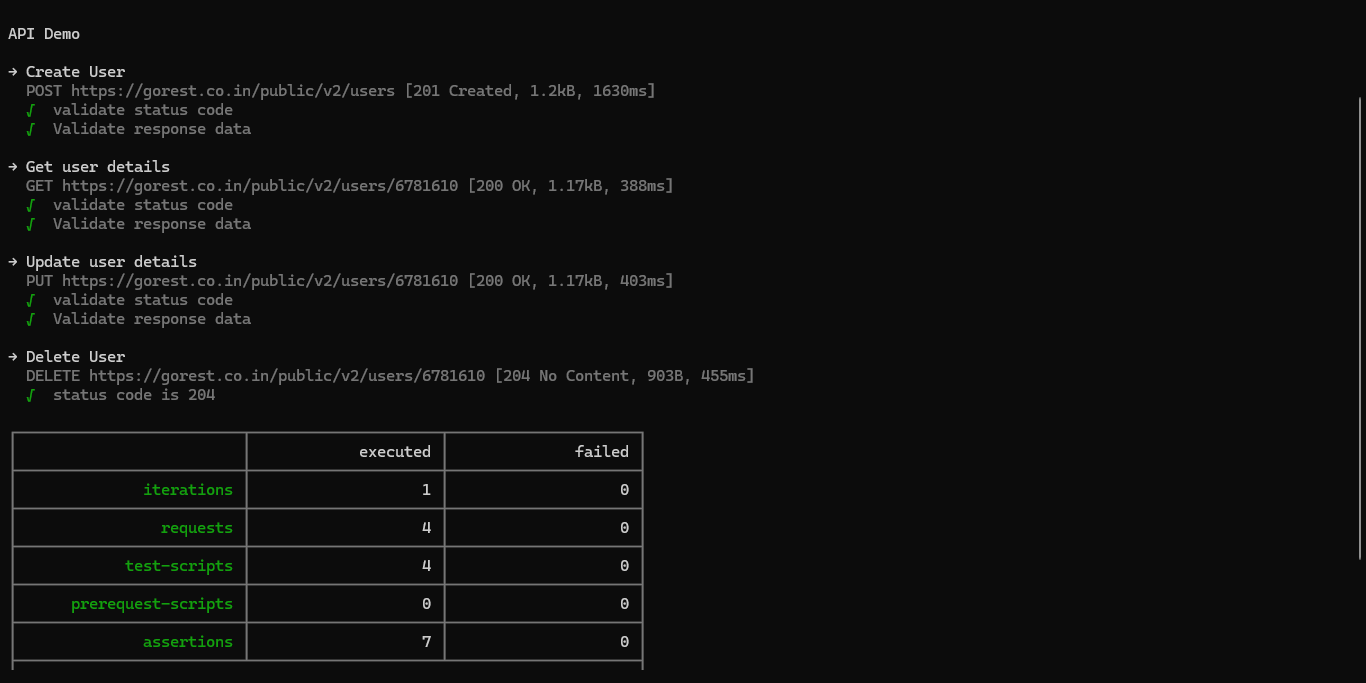
Newman HTML Reporting
If you would like to generate HTML reports, we’ve got that covered as well in our Postman API Automation testing tutorial. First, you’ll have to complete all the prerequisites listed below.
Pre-Requisites:
All you have to do is add the ‘-r’ flag followed by ‘htmlextra’ in the CLI command when executing a collection in Postman. Upon completion of the test run, an HTML file will be automatically generated within the Newman folder in the corresponding directory.
CLI Command:
newman run collection name.json --globals global variable name.json --env-var "token=YOUR_BEARER_TOKEN" -r cli,htmlextra

Benefits of API Automation Testing
Automating API tests offers numerous advantages beyond manual testing, enhancing developer workflows and facilitating rapid iteration. So the benefits we’ve discussed are not specific to Postman API automation testing as they apply to API automation on the whole.
Integration with UI Testing:
Combining UI testing with API automation addresses the frontend-backend interplay common in modern applications. This integration ensures comprehensive testing coverage, validating both the frontend and backend operations seamlessly.
Handling Data Complexity:
APIs interact with diverse data types, and API automation excels in managing this complexity effortlessly. Automated testing tools adeptly navigate through different data structures, meticulously validating inputs and outputs, irrespective of the format—be it JSON, XML, or others.
Early Issue Detection:
API automation facilitates rapid identification of problems and issues early in the development lifecycle. By automating API endpoint testing, developers streamline the debugging process, saving significant time by detecting issues before they escalate.
Integration with CI/CD Pipelines:
API automation seamlessly integrates into CI/CD pipelines, ensuring thorough testing of each code change before deployment. Automating the CI/CD process accelerates development cycles, promotes continuous delivery, and enhances the overall software release procedure.
Data-Driven Testing:
API automation enables teams to conduct data-driven testing effectively. By adjusting inputs and evaluating associated outputs, testing scenarios can be varied, ensuring consistent API performance across various circumstances.
Simulation of Realistic Scenarios:
API automation facilitates the realistic simulation of scenarios encountered in live environments. This provides valuable insights into API behavior under different loads and situations, encompassing scalability, performance, and stress testing.
Best Practices of API Test Automation
In order to achieve all the said benefits, you’ll have to follow the best practices when implementing Postman API automation testing.
Early and Continuous Testing: Initiate API testing in the development lifecycle’s early stages and sustain it throughout, facilitating prompt issue detection and mitigation, thus reducing development costs.
Diverse Test Case Design: Craft test cases encompassing a variety of input combinations to thoroughly assess API functionality, including valid and invalid inputs, edge cases, and boundary conditions.
Assertion-Based Response Verification: Employ assertions to validate API responses against expected outcomes, scrutinizing aspects such as response codes, timing, data integrity, and other critical parameters.
Effective Test Data Management: Efficiently manage test data by leveraging techniques like data-driven testing, parameterization, and data generation, ensuring comprehensive test coverage and minimizing reliance on manual data setup.
Robust Security Testing: Given the susceptibility of APIs to security breaches, prioritize security testing to evaluate authentication, authorization, encryption, input validation, and defenses against common vulnerabilities.
Performance and Scalability Monitoring: Conduct load and stress testing to assess API performance under anticipated high traffic and concurrent requests, monitoring metrics like response times, throughput, and resource utilization to identify and address performance bottlenecks.
Conclusion:
Now that we have reached the end of our tutorial, we hope you have a clear understanding of how to achieve Postman API Automation Testing. To sum it all up, Postman is a great choice as it requires minimum code to perform automation testing, supports scheduled test executions, and Newman integration for seamless reporting. We as a software testing company have found great value in using Postman and hope you will be able to as well.

by Mollie Brown | Jan 25, 2023 | API Testing, Blog, Featured |
Rest Assured is a powerful and easy-to-use Java library that helps automate the testing of RESTful APIs. It lets you send requests, check responses, and validate results with minimal code. Whether you’re a tester or developer, it’s a great tool for building reliable and maintainable API tests. In this blog, we’ll guide you through the basics of API Test Automation Testing using Rest Assured, from setting up your project and writing your first tests, to handling authentication and validating different types of responses. We’ll also share best practices to help you get the most out of your API tests.
Why Use Rest Assured for API Testing?
Rest-Assured works like a client without a user interface. It allows you to send flexible HTTP requests. You can also look at the responses from a RESTful server. It supports all the HTTP methods: GET, POST, PUT, DELETE, and PATCH. This makes it useful for API testing.
You can look at important parts of the HTTP response, like:
- Status Codes (such as 200, 404, 500)
- Response Body (like JSON, XML, and more)
- Headers
- Response Time
Rest Assured is popular because it works well with Java. It is simple to use and gives clear reports.
Key Features:
Rest Assured enables you to examine essential components of HTTP responses, including:
- Status Codes: These indicate the result of the API request, such as 200 for success, 404 for not found, and 500 for server errors.
- Response Body: The actual data returned by the API, often in JSON or XML format.
- Headers: Metadata included in the response, such as content type and authentication details.
- Response Time: The duration taken for the server to process and return a response.
It integrates seamlessly with Java-based frameworks, provides easy-to-read syntax, and generates clear, detailed reports.
BDD Approach in Rest Assured
Rest Assured uses a method called Behavior-Driven Development (BDD). This method helps make tests simpler to read and understand. Testers can clearly describe how the API works by using the terms given(), when(), and then().
- given(): Shows input details like Base URI, Headers, Path, or Request Parameters and Request Body.
- when(): States the resource and the HTTP method (GET, POST, PUT, PATCH, DELETE).
- then(): Confirms the response by checking the status code, response body, headers, and response time.
Pre-requisites
- Java JDK (8 or higher): Familiarity with Java is essential as Rest Assured is a Java-based library.
- Maven or Gradle: Use Maven or Gradle as build tools to manage dependencies.
- IDE: Use an IDE like IntelliJ IDEA or Eclipse to write and execute your test scripts.
- Testing Framework: Rest Assured works well with TestNG or JUnit for assertions and test management.
- Basic knowledge of Java and understanding of REST APIs.
How to Perform API Test Automation using Rest Assured?
Create a Maven Project
To set up your testing environment, create a Maven project:
Steps:
- Open your IDE (IntelliJ IDEA, Eclipse, etc.).
- Navigate to File → New → Project.
- Select Maven Archetype.
- Enter the project name and click Create.
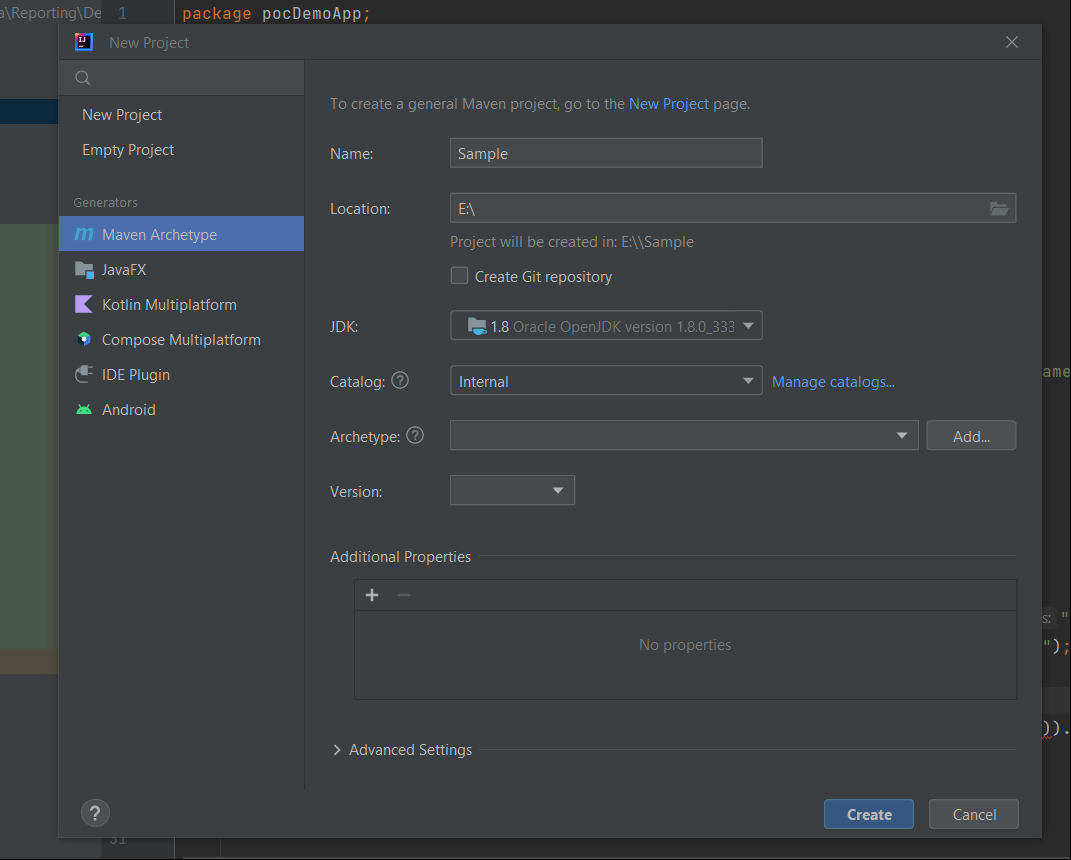
Add the Rest Assured dependency to your POM file
Now that you have created your Maven project, you must add the below-specified dependency to your POM.xml file.
<dependency>
<groupId>io.rest-assured</groupId>
<artifactId>rest-assured</artifactId>
<version>5.5.0</version>
<scope>test</scope>
</dependency>
Anatomy of a REST API
A REST API consists of the following components:
URI:
The URI is composed of the Base, Resource, Query, and Path.

- Base URI: The root address of the API, e.g., https://api.example.com/
- Endpoints: The specific paths where resources are exposed, e.g., /users, /orders, /products.
- Base Path: The common path prefix for all API endpoints, e.g., /api/v1.
- Query Parameters: Key-value pairs appended to the URL, used for filtering, sorting, and pagination, e.g., ?page=2&limit=10.
- Path Parameters: Dynamic values within the URL, used to specify resources, e.g., /users/{id} where {id} is replaced with an actual user ID.
- HTTP Methods:
- GET: Retrieves data.
- POST: Creates new resources.
- PUT: Updates an existing resource.
- DELETE: Removes a resource.
- Header:Headers provide metadata for requests and responses, such as:
- Content-Type: Specifies the format of the request body (e.g., application/json)
- Authorization: Includes authentication details (e.g., Bearer token)
- Request Body: The body contains the payload (data) sent in POST, PUT, or PATCH requests. It can be in JSON, XML, or other formats.
- Response: Includes status codes, response body, and headers.
Send the request over the network
You can send payload data using a String or a JSON object. A JSON file can also be used as the request body payload.
Verifying the received Response
Based on the response code you receive, you will be able to identify the status of the request. There are several status codes that you’ll have to know, but we have listed the most important ones below.
200 – When the request is a success
201 – Request succeeded and has created the resource
400 – Server couldn’t process the request due to a client error
429 – When someone has sent too many requests
404 – When the requested page is not available
Example Program:
In this example for API Test Automation using Rest Assured, we will be adding an employee’s details to the server and verifying if the data was updated correctly.
import io.restassured.RestAssured;
import io.restassured.specification.RequestSpecification;
import org.json.JSONObject;
import org.junit.Test;
import static io.restassured.RestAssured.*;
import static org.hamcrest.Matchers.*;
public class RestAssuredExample {
// Set the base URI once for all test methods
static {
RestAssured.baseURI = "https://reqres.in/api";
}
// Common request setup with JSON header
RequestSpecification request = given().header("Content-Type", "application/json");
// Test method for Basic Authentication
@Test
public void testBasicAuth() {
// This test uses basic authentication (username and password) to access a protected resource
given()
.auth().basic("username", "password")
.when()
.get("/protected-resource")
.then()
.statusCode(200)
.log().all();
}
// Test method for OAuth2 Authentication
@Test
public void testOAuth2() {
// This test uses an OAuth2 token to access a protected resource
given()
.auth().oauth2("your-access-token")
.when()
.get("/protected-resource")
.then()
.statusCode(200)
.log().all();
}
// Test method for Bearer Token Authentication
@Test
public void testBearerToken() {
// This test uses a bearer token in the Authorization header to access a protected resource
request.header("Authorization", "Bearer your-token")
.when()
.get("/protected-resource")
.then()
.statusCode(200)
.log().all();
}
// Test method for a simple GET request
@Test
public void testGETRequest() {
// This test sends a GET request to fetch details of user with ID 2
request
.when()
.get("/users/2")
.then()
.statusCode(200)
.body("data.id", equalTo(2))
.log().all();
}
// Test method for a POST request
@Test
public void testPOSTRequest() {
// This test sends a POST request to create a new user
JSONObject requestParams = new JSONObject();
requestParams.put("name", "John");
requestParams.put("job", "Tester");
request.body(requestParams.toString())
.when()
.post("/users")
.then()
.statusCode(201)
.log().all();
}
// Test method for a PUT request
@Test
public void testPUTRequest() {
// This test sends a PUT request to update user details
JSONObject requestParams = new JSONObject();
requestParams.put("name", "John Updated");
requestParams.put("job", "Senior Tester");
request.body(requestParams.toString())
.when()
.put("/users/2")
.then()
.statusCode(200)
.log().all();
}
// Test method for a DELETE request
@Test
public void testDELETERequest() {
// This test sends a DELETE request to remove the user with ID 2
request
.when()
.delete("/users/2")
.then()
.statusCode(204)
.log().all();
}
}
Code Explanation:
Authentication Mechanisms
Authentication is required for accessing protected APIs. Rest Assured provides multiple ways to authenticate requests.
a) Basic Authentication
given()
.auth().basic("username", "password")
.when()
.get("/protected-resource")
.then()
.statusCode(200)
.log().all();
- given(): Initializes the request.
- .auth().basic(“username”, “password”): Sets Basic Authentication with a username and password.
- .when().get(“/protected-resource”): Sends a GET request to the endpoint.
- .then().statusCode(200): Validates that the response status code is 200 (OK).
- .log().all(): Logs the full request and response details.
b) OAuth2 Authentication
given()
.auth().oauth2("your-access-token")
.when()
.get("/protected-resource")
.then()
.statusCode(200)
.log().all();
- .auth().oauth2(“your-access-token”): Uses an OAuth2 access token for authentication.
- The rest of the code follows the same pattern as Basic Authentication.
c) Bearer Token Authentication
request.header("Authorization", "Bearer your-token")
.when()
.get("/protected-resource")
.then()
.statusCode(200)
.log().all();
- .header(“Authorization”, “Bearer your-token”): Manually adds an Authorization header with a Bearer token.
- Useful when a direct .auth() method is not available or required.
- The rest of the code follows the standard GET request structure.
CRUD Operations with Rest Assured
CRUD operations allow interaction with a REST API by creating, reading, updating, and deleting resources.
a) GET Request (Read Data)
request
.when()
.get("/users/2")
.then()
.statusCode(200)
.body("data.id", equalTo(2))
.log().all()
- .when().get(“/users/2”): Sends a GET request to fetch user details.
- .statusCode(200): Ensures the response status is 200 OK.
- .body(“data.id”, equalTo(2)): Validates that the response contains id = 2.
- .log().all(): Logs request and response details.
b) POST Request (Create Data)
JSONObject requestParams = new JSONObject();
requestParams.put("name", "John");
requestParams.put("job", "Tester");
request.body(requestParams.toString())
.when()
.post("/users")
.then()
.statusCode(201)
.log().all();
- JSONObject requestParams = new JSONObject();: Creates a JSON object to hold request data.
- requestParams.put(“name”, “John”);: Adds name field to JSON.
- requestParams.put(“job”, “Tester”);: Adds job field to JSON.
- .body(requestParams.toString()): Sets the request body to the JSON string.
- .when().post(“/users”): Sends a POST request to create a user.
- .statusCode(201): Ensures response is 201 Created (successful resource creation).
- .log().all(): Logs the request and response details.
c) PUT Request (Update Data)
JSONObject requestParams = new JSONObject();
requestParams.put("name", "John Updated");
requestParams.put("job", "Senior Tester");
request.body(requestParams.toString())
.when()
.put("/users/2")
.then()
.statusCode(200)
.log().all();
- Creates a JSON object similar to the POST request.
- Updates user details (name and job).
- .when().put(“/users/2”): Sends a PUT request to update user 2.
- .statusCode(200): Ensures response is 200 OK (successful update).
- .log().all(): Logs all details.
d) DELETE Request (Remove Data)
request
.when()
.delete("/users/2")
.then()
.statusCode(204)
.log().all();
- .when().delete(“/users/2”): Sends a DELETE request for user 2.
- .statusCode(204): Ensures the response status is 204 No Content, indicating successful deletion.
- .log().all(): Logs request and response details.
Best Practices for API Testing with Rest Assured
- Use Logging – Always log requests and responses for better debugging.
- Validate Responses – Use assertions to verify status codes, response time, and body content.
- Parameterize Tests – Avoid hardcoded values; use dynamic data where possible.
- Use Environment Variables – Store credentials and base URLs securely.
- Test Negative Scenarios – Validate how APIs behave with incorrect inputs.
Conclusion
We hope you are now clear on how to perform API Test Automation using Rest Assured. Being a leading API Testing Services company, we have used various other tools such as SoapUI, Postman, and so on. We have also written numerous in-depth blogs about API testing as well. So make sure to go through our entire collection and subscribe to our newsletter to not miss out on any of our latest blogs.
Frequently Asked Questions
-
What is Rest Assured?
Rest Assured is a Java library used for testing RESTful APIs. It simplifies sending HTTP requests and validating responses, making it ideal for API automation testing.
-
Why should I use Rest Assured for API testing?
Rest Assured offers an easy-to-read syntax, integrates well with Java-based frameworks like TestNG and JUnit, and supports all HTTP methods. It also allows seamless validation of status codes, headers, response bodies, and response times.
-
Do I need to know Java to use Rest Assured?
Yes, basic knowledge of Java is required since Rest Assured is a Java-based tool.
-
Can I automate both positive and negative test cases with Rest Assured?
Yes, you can and should automate both. Rest Assured makes it easy to validate both successful responses and how the API handles invalid inputs or edge cases.
-
Is Rest Assured suitable for CI/CD pipelines?
Definitely. Rest Assured tests can be integrated into Jenkins, GitLab CI, or other CI/CD tools to run automated API checks as part of your development workflow.

by Charlotte Johnson | Dec 7, 2022 | API Testing, Blog |
API testing is an integral part of the complete testing process as it will help you identify bugs and issues at different layers of your application. So choosing the right API testing tool is crucial as it can help you reduce testing time and increase testing efficiency. Being an experienced API testing company, we have used a wide range of API testing tools. Though Rest Assured is a Java library and not a standalone tool, it is one of the widely used tools for API testing along with Postman. So in this blog, we will be comparing Postman vs Rest Assured as they are widely used by many in the testing community. There is no one size fits all solution when it comes to choosing the right testing tools. With that being said, let’s find out which tool will suit you the best.
Postman
Many might have a misconception that Postman is used only to perform manual API testing. But Postman does have automation testing capabilities as well. According to recent reports, Postman has crossed the incredible milestone of having more than 20 Million registered users. This is an incredible feat considering that Postman initially launched in 2012 as a Google Chrome extension.
Rest Assured
Rest Assured is a Java-based library that can be used to perform automation testing on REST APIs and services. The libraries based on the Rest Assured library can also validate the server’s HTTP responses. Though Rest Assured isn’t as popular as Postman, it is still a great API testing library.
Now that we have been introduced to both options, let’s take a closer look at the difference between the two in our Postman vs Rest Assured section.
Postman vs Rest Assured: Key Highlights
| Features |
Postman |
Rest Assured |
| Types |
Best suited for exploratory, manual, and automation Testing. |
A Java library for performing Automated API Testing. |
| Pricing |
A limited open-source version & an advanced Propeitory version. |
Open-source |
| Scripting Language |
Supports only JavaScript. |
It has support for Java, . Net, Python, Ruby, etc |
| API Response Time |
It is faster in comparison. |
It is slower in comparison. |
| Code Reusability |
Requests have to be copied from one collection to another manually. |
Can be done with ease as it is a Java client. |
| Integration |
Less scope for integration |
More scope for integration |
| Customized Reports |
Does Not allow us to customize Reports |
We can customize reports for rest assured. |
| Parallel Execution |
Harder to Achieve |
Easier to Achieve |
| Designing a Data-Driven framework |
Limited with only one data file for each collection |
No Limitations at all |
Postman vs Rest Assured: In-Depth
Now that we have seen the key differences, let’s taker a deeper dive into the critical aspects you’ll have to consider.
Though Postman does offer a free version that can be used, there are a lot of limitations that come along with it. But in contrast, Rest Assured is a completely free open-source option with all the features you’ll need to perform effective API Testing. So if you are looking for an open-source option and will be scaling your test suite with time, you can skip the Postman vs Rest Assured comparison and go straight ahead with Rest Assured. But if cost alone isn’t the only deciding factor, you can consider the below points as well.
Code Reusability
As Rest Assured is using Java client, we can easily make reuse the methods depending on our testing needs instead of writing new methods every time. Whereas, Postman doesn’t provide the option of reusing pre-written scripts. So if you are choosing between Postman and Rest Assured for a large project or will be scaling your testing in the future, Rest Assured would be the right choice.
Ease of Use
As mentioned earlier in our Postman vs Rest Assured blog, Postman is the actual tool, and Rest assured is a Java library. So Postman has a great user interface that you can access easily by logging through a browser; making it very simple and easy to use. You also wouldn’t need to know how to work with an IDE to get things done.
Though Rest Assured uses Given/When/Then test annotations to simplify your tests and make them easy to understand even for non-technical people, the lack of a GUI does make Postman more user-friendly.
End-to-End Testing
Let’s take an example where you have to test if the data received from the web has been processed by the API and stored in the database as expected. In such end-to-end testing scenarios, opting to use Rest Assured would be the better way to go. You can add other third-party applications such as Jenkins with Rest Assured for CI/CD Integration as it is a framework. So with the help of dependencies, we can easily cover that part. Whereas Postman has less support for such integration.
But if you’re primarily looking to debug or perform manual exploratory testing, Postman is still a great option thanks to its great UI. Though automation is possible with Postman, the scale at which it can be done is a major factor to consider in this Postman vs Rest Assured comparison.
General Tips for Making the Right Choice
According to us, the major differences when comparing Postman vs Rest Assured arise from the fact that one is a tool and the other is a framework. If you are still unable to pick the right choice, here are a few tips that can help you arrive at the right decision.
- Analyze your requirements thoroughly and list them all.
- Define the dealbreaker aspects before analyzing other attributes.
- Sort your requirements based on priority.
- See which tool satisfies most of your needs, by using the above-discussed points.
Conclusion:
As in the case of most tool comparisons, the answer is not an easy this or that solution due to the numerous factors involved while choosing the right API testing tool. We hope our Postman vs Rest Assured comparisons have helped you understand the pros and cons of both these tools. In our years of delivering API testing services to different clients across the globe, we have used both Postman and Rest Assured based on the needs of the project. We recommend you do the same when it comes to choosing between Postman and Rest Assured. For more such insightful content, make sure to subscribe to our newsletter to not miss out on any of our latest updates.

by Mollie Brown | Jun 30, 2022 | API Testing, Blog |
API testing has become increasingly important as cloud apps and interconnectivity platforms have grown in popularity. In fact, many of the services we use on a daily basis rely on hundreds of interlinked APIs. So even if any one of the APIs fails, the service will cease to function. That is why it is extremely important to perform API testing without fail. If you are looking to learn what API testing is and how to do it, you’re at the right place. We will also be covering the different types of bugs and challenges of API testing in this API testing tutorial. But before that, let’s brush up on the basics by seeing what an API is and what it does.
What is an API?
API (Application Programming Interface) is a computing interface that allows two different software systems to communicate with each other and share data. Let’s take a look at a real-time example to better understand the functionality of an API. Let’s assume that you are in a restaurant and that you have decided what to order from their menu. Though you have made a choice, the food will reach you only if your order is received in the kitchen and that is made possible with the help of a waiter who takes your order. So in this scenario, your order is the request, the kitchen is the server, and the waiter is the API.
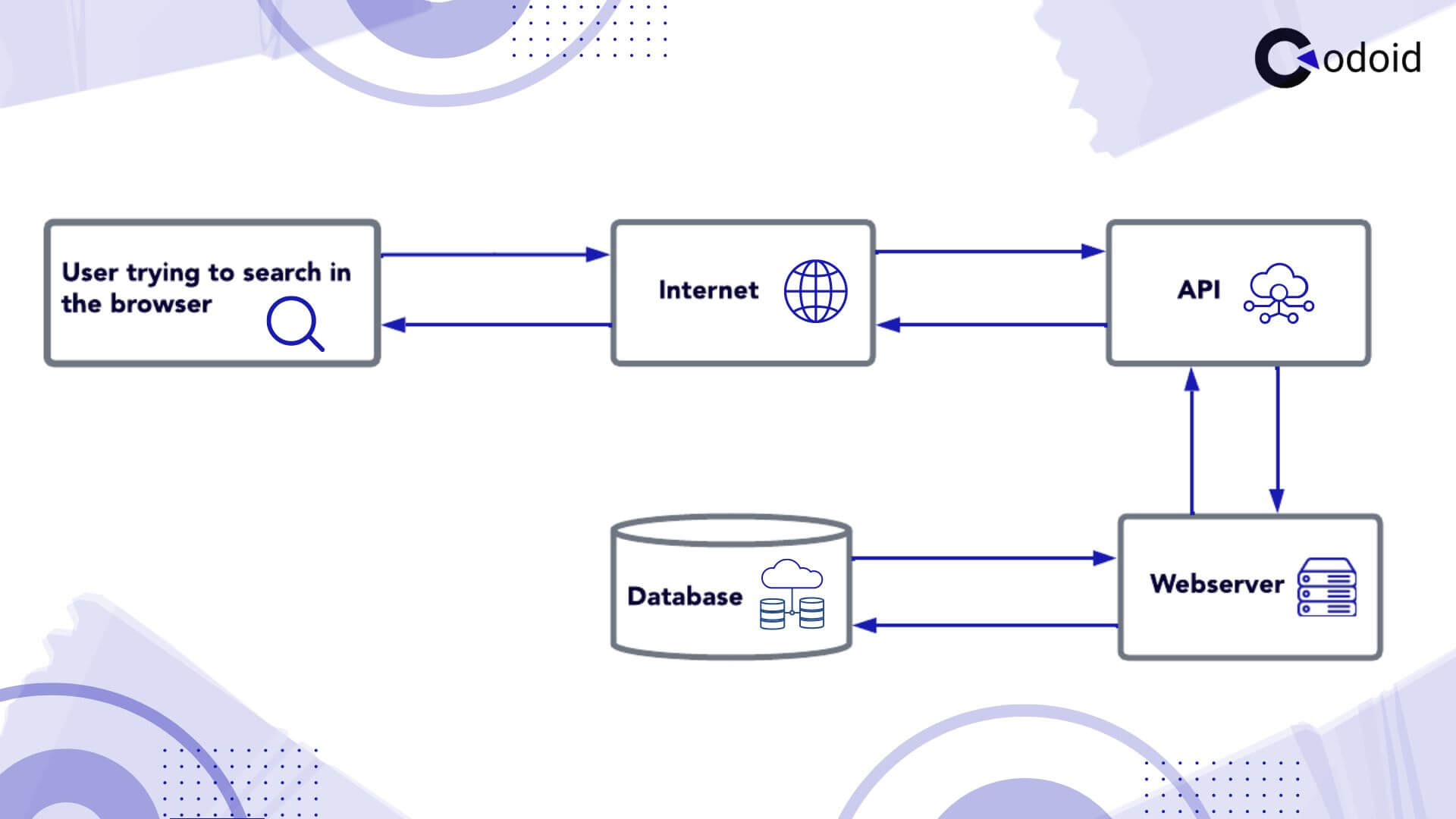
As shown in the figure, a Web API can also be defined as “a communication interface between a client computer and a webserver.”
Web Services vs Web API:
If you are aware of what Web Services are, you might feel that both Web Services and Web APIs serve the same purpose. Though Web Services (like Web API) are services that allow one computer to communicate with another. However, the main distinction between API and Web Services is that Web Services make use of a network. So let’s take a look at the key differences between the two
| S. No |
Web Services |
Web API |
| 1 |
Web Services Are Software Components That Convey Specific Data/Information, Send Or Post Data, Or Update Data Using Web Protocols Such As HTTP And XML |
APIs Are A Piece Of Software That Lets Two Separate Apps Or Machines Communicate With Each Other Without The Need For Human Intervention. |
| 2 |
A Web Service Is A Type Of Network Communication Between Two Machines. Eg. Netflix |
A Web API Is An Interface Between Two Independent Applications. |
| 3 |
Web Services Are Generally Developed In XML (Extensible Markup Language), Which Increases Their Security. |
Web APIs Frequently Employ JSON (JavaScript Object Notation), Which Makes Them Easier To Use. |
| 4 |
Web Services Require A Network To Function. |
The Functioning Of A Web API Does Not Always Require A Network. |
| 5 |
Web Service Is A Subset Of Web API. For Example, Web Services Are Based Only On Three Utilizations: SOAP, REST, And XML-RPC. |
Web APIs Are The More Advanced Version Or Superset Of Web Services. For Example, The Web API Supports All Three Kinds Of Web Services, But It Also Supports Alternative Styles Such As JSON – RPC. |
| 6 |
In Most Cases, It Communicates Through The HTTP Protocol. It Also Communicates Through SOAP, REST, And XML-RPC. |
It Uses Any Communication Protocol Such As HTTP/HTTPS To Start The Interaction Between The Applications. |
| 7 |
It Doesn’t Have A Comprehensive Set Of Requirements, And It Can’t Always Do All Of The Functions That A WEB API Can. |
An API Is A Collection Of Rules And Criteria That Are Followed To Make Interaction Easier. |
What is API Testing?
Given the purpose, API testing can be termed as the process of evaluating a set of application programming interfaces (APIs) individually or as part of an integration test to see if they meet the expected functionality, reliability, performance, and security requirements.
What makes it different from other types of testing?
- API testing is different from the regular type of testing as it is a black-box type of testing that doesn’t have a Graphical User Interface (GUI).
- As there is no GUI, you will not employ the conventional input and output mechanisms such as keyboard, mouse, monitor, and so on for your API testing.
- API testing would require you to use software to make the API calls, receive the output, and record the feedback as well.
- Since there is no GUI, there is no focus on the look and feel of the app. Rather, it only focuses on the business logic layer of the software’s architecture.
How to do API Testing?
Now that we have seen how API testing differs from the other types of testing, let’s explore the different stages of API testing in this API testing tutorial.
Understanding API Requirements:
Understanding the requirements is the number one step in all types of testing. And when it comes to API testing, it would be helpful if the testers understand the application’s workflow and how it is expected to perform. This step helps the tester define the verification approach as API testing is all about the responses from the database.
Checking the output status:
There is a response code or the response status code in API testing for checking the output status. It enables the tester to know if a test case has passed or failed with ease. So here’s the list of the different types of response codes and their meanings.
- 1xx (Informative): The request has been received and is being handled.
- 2xx (Successful): The request was received, comprehended, and accepted successfully.
- 3xx (Redirection): More action is required to complete the request.
- 4xx (Client Error): The request has incorrect syntax or is unable to be fulfilled.
- 5xx (Server Error): A seemingly valid request is not fulfilled by the server.
Organizing the API:
A testing project could contain dozens, if not hundreds, of APIs to be tested. For better test management, testers are strongly advised to classify them into categories. It is also critical to organize and size an API’s data, feedback, and goals in order to deliver an API that is easy to use and does not overload consumers.
Test Cases for API Testing
Positive test cases:
- Check whether the API takes the provided inputs and provides the desired output as defined in the requirement.
- Check the answer status code in the output status as mentioned in the previous part of this API testing tutorial.
- Provide an input by filling just the bare minimum of the required fields and by also filling all the fields.
Negative test cases:
- When the expected output does not exist, make sure the API responds appropriately.
- Conduct an input validation test.
- Use different levels of authorization to test the API’s behavior.
Automating the tool:
Using automation as much as feasible and as early as possible in the API testing process is very crucial as it can save a lot of time. It also makes it possible to save the test execution history. Since API testing is considered black-box testing, automation should be used extensively in order to maximize test coverage. It should also be conducted at an early stage of the SDLC.
API Testing Tools:
When running an API test, developers may either design their own framework or utilize one of several ready-to-use API testing solutions. API testing tools provide user-friendly interfaces with low coding requirements, making it possible for less-experienced engineers to deploy tests. So next up in our API testing tutorial, we’re going to take a look at the most useful API testing tools. Being a pioneer API testing Service provider, we always prefer to use open-source tools and have suggested the same here too.
SoapUI:
SoapUI is one of the world’s most popular API testing tools that is designed to verify API functioning in both SOAP & REST APIs and web services as well. It is a great choice if you’re looking for an easy-to-use and fast tool to build & run automated functional, regression, and load tests.
Apache JMeter:
The Apache JMeter is a great open-source option that can be used to perform load testing for your API and see how well it performs at different load conditions. Though it was initially developed with the focus of testing web applications, its scope of usage has now widened.
Apigee:
Apigee is an API development and management platform that can be used as an API performance testing tool as well. It has an intuitive UI that works well for both technical and non-technical users. But what makes Apigee great is that it provides security, rate limiting, analytics, and so on by fronting the backend service with a proxy layer.
REST Assured:
As the name suggests, REST Assured is an API Testing tool that can be employed to test REST APIs. Like Apache, REST Assured is also a Java-specific tool and its biggest advantage is that it supports Behavior-Driven Development (BDD) syntaxes.
Swagger UI:
Swagger UI is also an open-source program that allows users to see and interact with the API’s resources without requiring any implementation logic. It simplifies the testing process by generating a web page that lists the APIs that have been used.
Postman:
It is an end-to-end solution that enables users to perform API testing , verification, and automation. You can quickly explore, debug, & test your APIs and even design complicated API requests in HTTP, REST, SOAP, GraphQL, & WebSockets.
Katalon:
Katalon is a great choice if you are looking to improve your test coverage. It is also highly dependable as it follows the Data-Driven test approach. Despite being an open-source tool, it can be used in projects of all sizes all thanks to its productivity-focused features and user-friendly UI.
Types of Bugs in API Testing
It goes without saying that any type of testing would reveal the numerous bugs in a product. So we are now going to see the most commonly found bugs in our API testing tutorial to help you get an idea of what to expect when performing those steps.
- Fails to effectively handle the incorrect conditions.
- Overlooking the flags that have never been used before.
- Duplicated or missing functionality.
- It faces issues with Reliability Connecting to API and receiving a response is difficult.
- Security Concerns
- Bugs that arise due to multithreading.
- Performance issues such as API response time.
- Incorrect errors/warnings being sent out.
- Inability to handle valid argument values.
- The data in the response isn’t organised properly (JSON or XML).
Challenges of API Testing
Like every other type of software testing, API testing also has its own share of challenges.
1. When it comes to Web API testing, the 3 most common issues are parameter combinations, parameter selection, and call sequencing.
2. Since it is a black-box type of testing, the lack of a GUI makes it impossible to provide input values during the testing process.
3. API testing is also a little difficult for testers to validate and verify the results in a separate system.
4. The necessity to test the exception handling function is also a challenge.
Conclusion:
Since the business logic layer is represented by a set of classes, functions, and methods in an API, it goes without saying that API testing plays a very crucial part in ensuring a product’s success. And you will need to use the correct testing methodology and tools to ensure the best results. We hope this API testing tutorial has provided you with a systematic approach and a lot of useful insights about API testing as well. Being a top Quality assurance company, we will be posting more insightful content in the future and highly recommend you to subscribe to our newsletter to make the most of it.

by admin | Oct 27, 2021 | API Testing, Blog, Latest Post |
Postman is one of the most popular software testing tools which is used for API testing. Postman is widely used by both software testers and developers for testing as it is easy to integrate with Continuous Integration (CI) & Continuous Development Pipelines. Postman sends an API request to the webserver and receives the response. As one of the leading QA companies, we have been doing our manual Rest API testing using Postman whenever it was deemed necessary. So if you are someone who is looking for a complete guide that explains everything from what is REST API to how it works to how it can be manually tested using Postman, you will definitely find this blog useful.
API (Application Programming Interface)
An API is a set of defined rules that enables computers or applications to communicate with one another. APIs sit between an application and the webserver and acts as an intermediary that processes data transfer between systems.
What is REST API?
- REST API (Representational State Transfer Application Program Interface) is an architectural style that allows the software to communicate with other software on the same device or over a network.
- REST APIs communicate via HTTP requests to perform standard database functions like creating, reading, updating, and even deleting records (also known as CRUD) within a resource.
Why REST API?
These are the major reasons as to why we choose REST API over the other options. REST API is
1. Easy to Learn & Implement
2. Easy to Build & Maintain
3. Scalable
4. Cacheable
5. Flexible and Portable
How does REST APIs work?
As stated earlier, REST APIs use HTTP requests for their communication. HTTP works as a request-response protocol between a client and server and enables client-to-server communication. For example, your web browser can be considered as the client, and the application on the computer that hosts the website can be termed as the server. So if your browser (client) submits an HTTP request to the server, the server will return a response that contains the status information of the request and the requested content if any were requested.
Common HTTP methods (CRUD commands) used in REST API:
Most of these commands have very straightforward names that make them self-explanatory. So once you have been introduced to them, it will be very easy for you to remember.
- GET – The GET method can be used to extract information from the given server using a given URI. It is worth noting that when you use the GET request, it should only extract the data and not have any other effect on the data. So no Payload/Body is required.
- POST – As the name suggests, a POST request is used to send data to the server. Data like customer information, files, and so on can be sent using HTML forms.
- PUT – Using PUT, you will be able to replace all the current representations of the target resource with the uploaded content.
- DELETE – It can be used to remove all the current representations of the target resource given by a URI.
There are other CRUD commands like patch, copy, and so on as well. So once you are thorough with these basics, you can explore them.
API Contract
We have seen the basics of REST API that you will need to know. There are also a few basics of Postman that you should be familiar with. But before we can move forward, we have to explore a few aspects of the API contract as you’d have to know the following information to perform manual REST API testing using Postman.
Endpoint:
It is the address where the API is hosted on the Server. An End Point Request URL can be constructed as below
Base URL/resource/(Query/Path)Parameters
Resources:
They represent the API/Collection that can be accessed from the Server. We have listed a few common examples below to help you understand better.
- Google.com/maps
- google.com/search
- google.com/images
Here maps, search and images are the resources of Google.com which is the Base URL.
Path Parameters:
Path parameters are the variable parts of a URL path. They are generally used to point to a specific resource within a collection in the same way how a user is identified by ID.
Example for Path Parameters:
- https://www.google.com/Images/1123343
- https://www.google.com/docs/1123343
- https://amazon.com/orders/112
Here 1123343, and 112 are the parameters
Query Parameters:
Query Parameters are primarily used to sort or filter the resources. They can be identified with ”?” (A Question Mark). You’ll be able to identify them once you see a few examples.
- https://amazon.com/orders?sort_by=07/09/2021
- https://www.google.com/search?q=newyork&oq=newyork&aqs=chrome..69i57j0l7.2501j0j7&sourceid=chrome&ie=UTF-8
Here orders and search are your resources and they are sorted and filtered by the query parameter that is followed by the “?”.
Headers/Cookies:
Headers represent the meta-data associated with the API request and its response. In layman’s terms, it will be used to send additional details to the API for processing our request. An example of it would be the authorization details.
Sample API Contract for Basic CRUD commands:
Apart from these values, we would also have to know about the HTTP method in use, the body, content types of the parameter and response (either Application or JSON), and also the response value. You will get a clear idea of these aspects when we see a few examples.
1. Request to Log in – Successful
Parameters
Base URL: https://reqres.in
Request : /api/login
Request Type: POST
Body :
Parameter Content Type: application/json
Responses:
Response Content Type: application/json
Response Code : 200
Description : OK
Response Value :
{
"token": "QpwL5tke4Pnpja7X4"
}
2. Request to Get a List of Users
Parameters
Base URL: https://reqres.in
Request: /api/users
Request Type: GET
Responses:
Response Content Type: application/json
Response Code : 200
Description : OK
Response Value :
{
"page": 1,
"per_page": 6,
"total": 12,
"total_pages": 2,
"data": [
{
"id": 1,
"email": "[email protected]",
"first_name": "George",
"last_name": "Bluth",
"avatar": "https://reqres.in/img/faces/1-image.jpg"
},
{
"id": 2,
"email": "[email protected]",
"first_name": "Janet",
"last_name": "Weaver",
"avatar": "https://reqres.in/img/faces/2-image.jpg"
},
{
"id": 3,
"email": "[email protected]",
"first_name": "Emma",
"last_name": "Wong",
"avatar": "https://reqres.in/img/faces/3-image.jpg"
},
{
"id": 4,
"email": "[email protected]",
"first_name": "Eve",
"last_name": "Holt",
"avatar": "https://reqres.in/img/faces/4-image.jpg"
},
{
"id": 5,
"email": "[email protected]",
"first_name": "Charles",
"last_name": "Morris",
"avatar": "https://reqres.in/img/faces/5-image.jpg"
},
{
"id": 6,
"email": "[email protected]",
"first_name": "Tracey",
"last_name": "Ramos",
"avatar": "https://reqres.in/img/faces/6-image.jpg"
}
],
"support": {
"url": "https://reqres.in/#support-heading",
"text": "To keep ReqRes free, contributions towards server costs are appreciated!"
}
}
3. Request to update user Information
Parameters
Base URL: https://reqres.in
Request : /api/users/{{User_ID}}
User_ID=2
Request Type: PUT
Body :
{
"name": "morpheus",
"job": "zion resident"
}
Parameter Content Type: application/json
Responses:
Response Content Type: application/json
Response Code : 200
Description : OK
Response Value :
{
"name": "morpheus",
"job": "zion resident",
"updatedAt": "2021-10-05T19:20:33.979Z"
}
4. Request to Get a List of Users
Parameters
Base URL: https://reqres.in
Request : /api/users/{{User_ID}}
User_ID=2
Request Type: DELETE
Responses:
Response Content Type: application/json
Response Code : 204
Description : OK
Response Value :[]
Now that we have fully covered all the prerequisites when it comes to REST API, let’s see why we use test REST APIs and explore a few other prerequisites that will be required to perform Rest API testing using Postman.
Why Postman tool?
Postman is a simple GUI for sending HTTP requests and viewing its responses. It is built upon an extensive set of power tools, which are incredibly easy to use. Postman helps you perform a variety of functions and has a lot of useful functionalities as well.
- Since Postman is accessible from anywhere, you have to just install it into the device and access it by logging into the account.
- Your test suites will be more organized as Postman allows users to build collections for their API calls. Every set can create multiple requests and subfolders.
- Using Postman, you’ll be able to test checkpoints with the verification of the successful HTTP response status that will be added to every API call.
- Automation Testing becomes easier as several iterations of the tests can be performed by using the Collection Runner or Newman. So you can save a lot of time when performing repetitive tests.
- As Postman makes it easy to create environments, you can design multiple environments and reduce the replication of tests as you’ll be able to use the same collection for a different setting.
- The postman console helps to track what data is being retrieved makes it possible to effectively debug the tests.
- The scope for collaboration is also high as you can import or export your collections & environments and share those files. You can also use a direct connection to share the collections.
- Postman supports continuous integration as well.
- You can use Postman by either downloading & installing their application or use their web version. It is a good option to have as both offer great performance.
How to create API requests in Postman
Learning how to create API requests is an integral part of learning how to perform manual REST API Testing using Postman. You will need to know more about the following 2 features to create an API request.
Workspace in Postman:
Postman Workspaces acts as a common working area where you can group your API projects together and use API builder to define APIs or generate API elements. So they are helpful in organizing your API work better and collaborating with your teammates as well. Now let’s see how to create one.
Creating a Workspace in Postman:
Click on the Workspace dropdown in the header -> New Workspace -> WorkSpaceName (Type any workspace name you wish) -> Create Workspace.
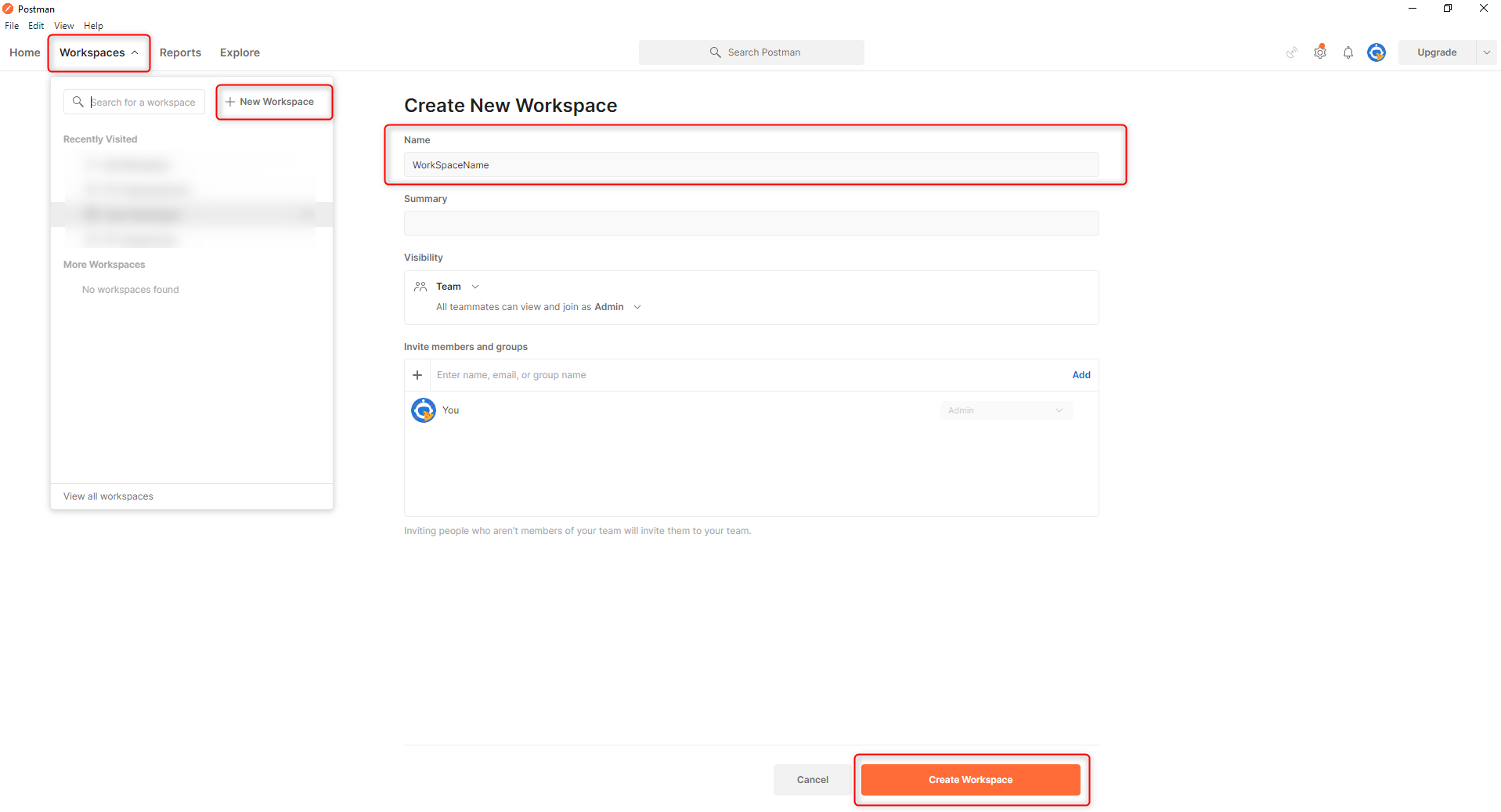
Collections in Postman:
- Postman Collections are Executable API Descriptions Postman’s collection folders make it easy to keep your API requests and elements organized.
- Generate Collections from API schemas Generate a collection from an API schema to view and edit each request.
Creating Collections in Postman:
Click on File -> New -> Collection -> CollectionName (Assign a Collection Name as you wish)
OR
Click Collection -> Create Collection Icon (+) -> CollectionName (Enter a Collection Name of your wish)
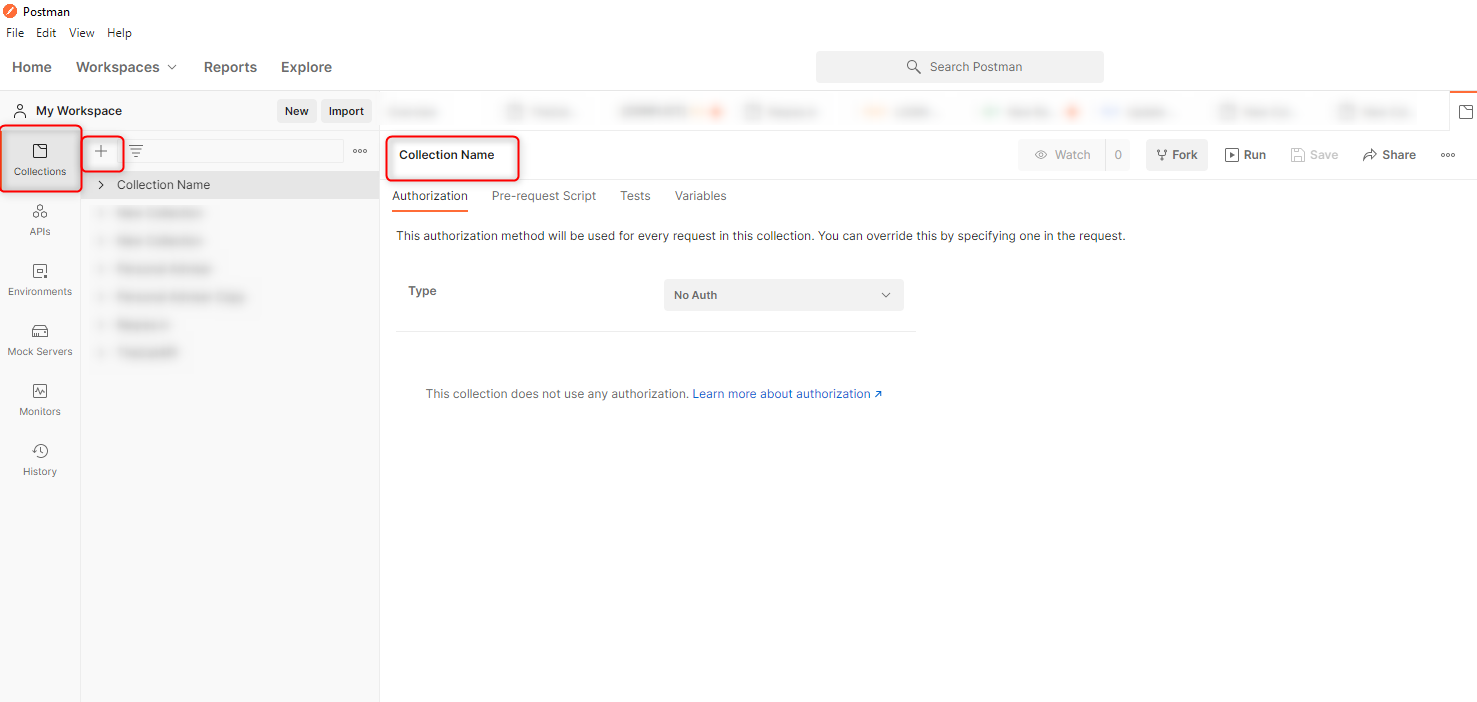
For testing the CRUD commands, we are going to use the information which is present in the above mention API contract.
Testing POST Request to Log in – Successful:
To make a POST request, click on the More option icon (…) -> Add Request -> Login User
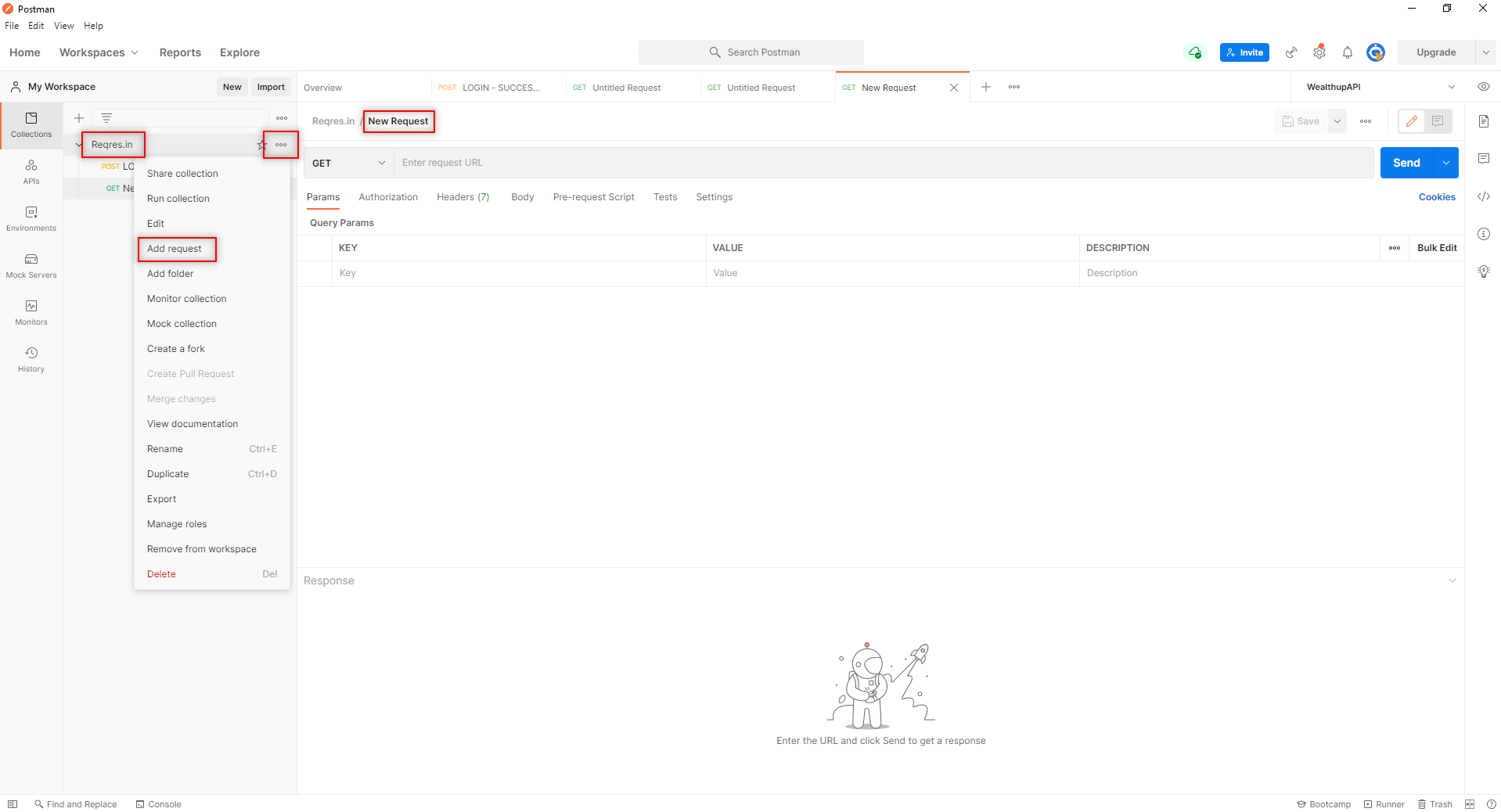
1. From the Dropdown select POST
2. In the “Enter request URL” text box, type the following (URL): https://reqres.in/api/login
3. Click on Body Tab, select the ‘Raw’ radio button, and then the JSON format from the dropdown list.
4. In the text box, paste the Login Credentials:
5. Click on the Send button
6. You should be able to see the below response:
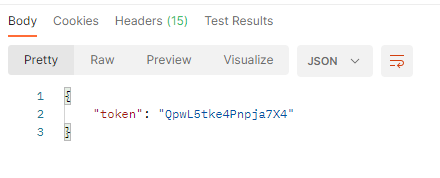
7. Also, make sure to check for the correct status code here. In this case, you should get: ‘Status: 200’ as shown in the image below.

Testing GET Request to Get the List of Users:
To make a GET request, you have to click on the More options icon (…) -> Add Request -> Request to Get List of Users (Assign any requested name you wish)
1. From the Dropdown list, select GET
2. Type the mentioned URL (https://reqres.in/api/users) in the “Enter request URL” text box.
3. Click on the Send button.
4. You’ll be able to see the below response:
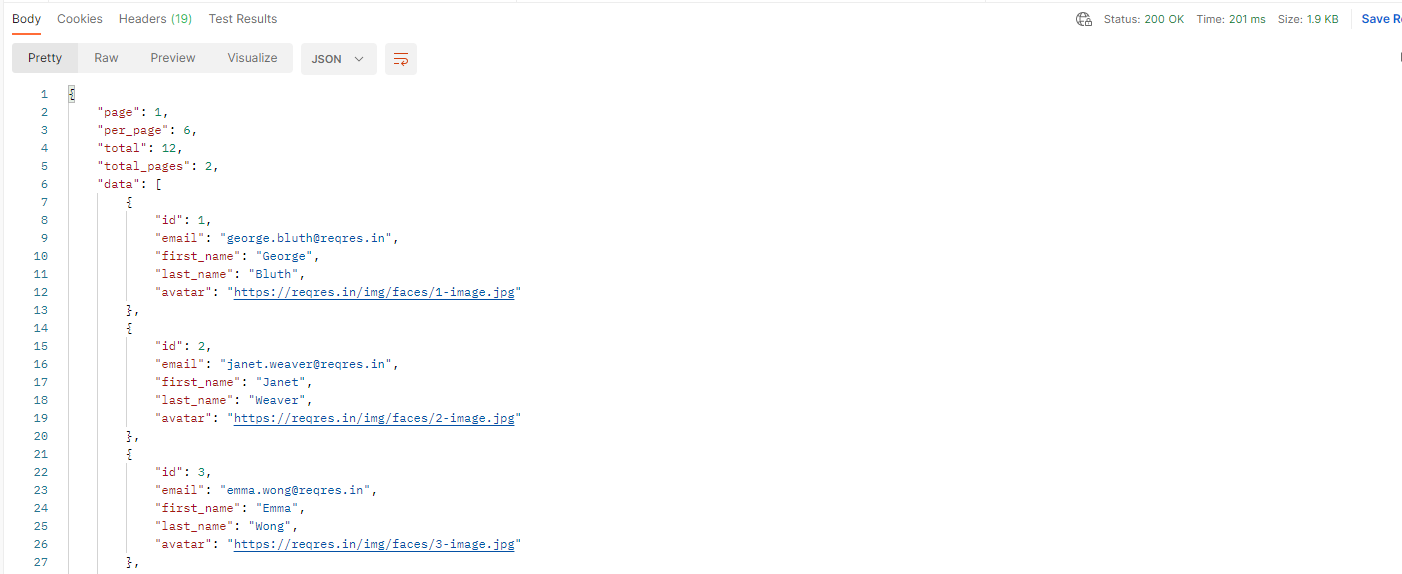
5. Once again, check for the status code and see if it is ‘Status: 200’.

Testing PUT Request to update user Information:
Same as above, you have to click on the More option Icon(…) ->Add Request -> Request to Update user Information (Enter any request name of your choice)
1. Click on ‘PUT’ from the dropdown list.
2. In the “Enter request URL” text box that appears, type this URL: https://reqres.in/api/users/2
3. Click on the ‘Body’ Tab, select the ‘Raw’ radio button, and then choose the JSON format from the dropdown.
4. Paste the Login Credentials in the text box:
{
"name": "morpheus",
"job": "zion resident"
}
5. Click on the ‘Send’ button
6. You will see the below response:
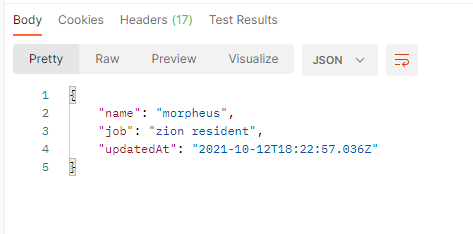
7. Check if the status is shown as ‘200 OK’.

Testing DELETE Request to Remove Users from Database
Click on the More option Icon (…) -> Add Request -> Request to Get the list of Users (Enter any request name you wish)
1. From the Dropdown list of options, select ‘DELETE’.
2. Type this URL https://reqres.in/api/users in the “Enter request URL” text box.
3. Click on the ‘Send’ button
4. Check is you see the below response:
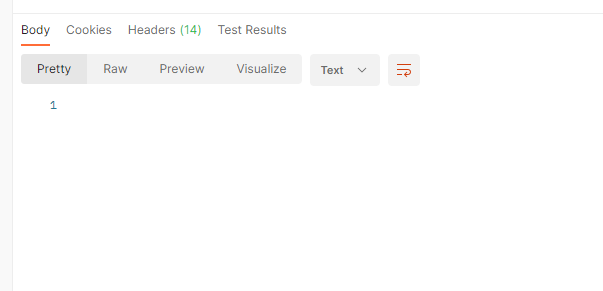
5. Check if ‘Status: 200 OK’ is visible as shown in the image below.
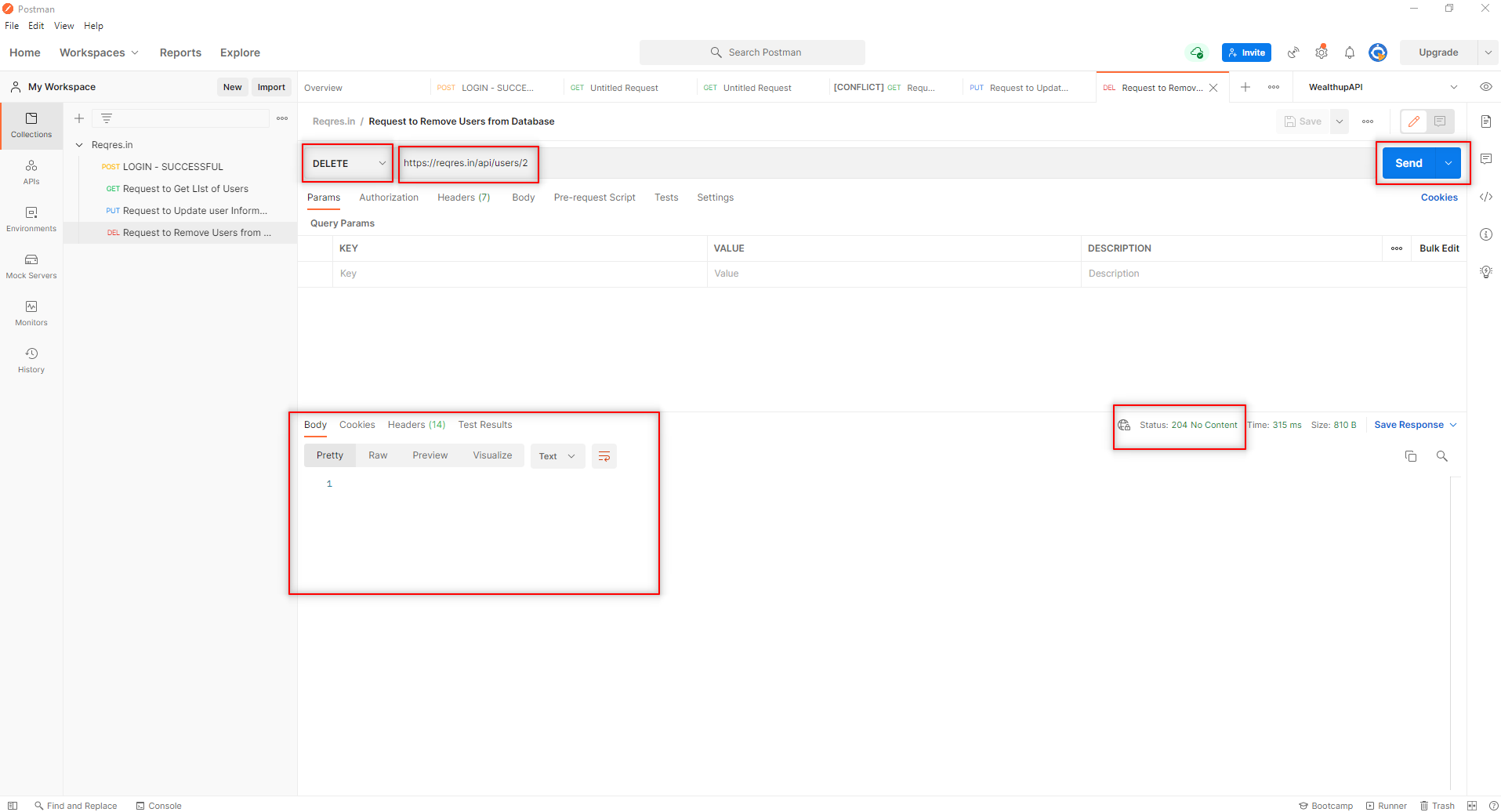
Conclusion:
It is evident that the steps we saw for each request were almost identical to each other. So by now, you should have no trouble in performing Rest API testing using Postman in an effective way to ensure high quality. As a leading manual testing services provider, we have often used Postman for our manual testing projects. But Postman can also be used for automation testing with the help of Test scripts.

by admin | Jul 13, 2021 | API Testing, Blog, Latest Post |
Postman is an API (Application Programming Interface) development tool that allows users to perform GET, POST, PUT, DELETE, and many other requests to the web service API. Postman allows you to manually test your APIs in both its desktop and web-based applications. However, it also has the ability to automate these tests by writing JavaScript assertions on your API endpoints. As one of the best QA companies, we always thrive on using the best tools for our projects, and Postman has become one of our go-to tools when it comes to API testing. So in this Postman Guide, we will be exploring how to perform the above said requests like Post, Request, and so on. But before we proceed further, let’s have a brief introduction to API testing.
What is API Testing?
API testing is a type of software testing where application programming interfaces (APIs) are tested to determine if they meet the expected functionality, reliability, performance, and security levels. It only concentrates on the business logic layer of the software architecture.
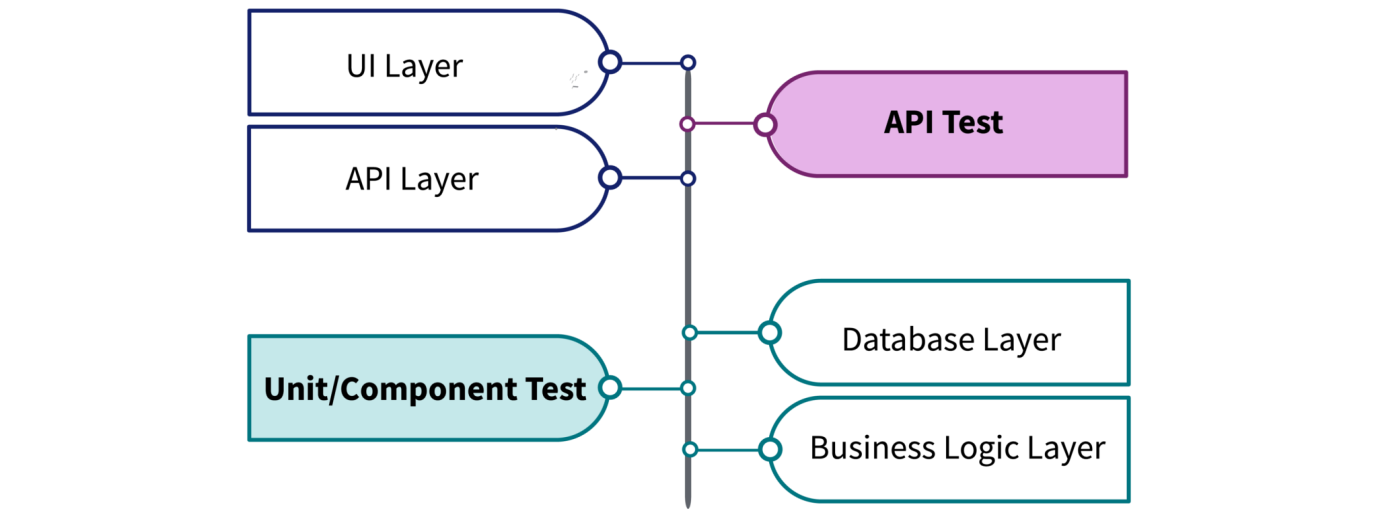
Some of the important components in Postman
Users will be able to write a script to manipulate the data being sent with the request. The pre-request script will run before the request is sent.
This is the test editor where the users can configure the test cases that are being validated once the request has been fulfilled.
The environment in postman is a set of key-value pairs which is used to set dynamic values.
A group of requests will be displayed under collections, and it can be used to organize and keep track of related requests.
Postman Guide to create & run the First API Request:
First and foremost, we have to create a new workspace and click on the New option under ‘File’, and then select ‘Request’.

Enter the name as ‘GET Request’ and then click on + NEW COLLECTION. Following which we will be able to assign a suitable name for the collection.
Once we click on Save, the collection name will be displayed with your API in it. Now that we have prepped everything, let’s make the first API call by following the below steps,
We have to enter the URL in the address bar and click on the ‘Send’ button to see the response.
The response will include details such as the status code, time, size, headers, and cookies alongside the Body.
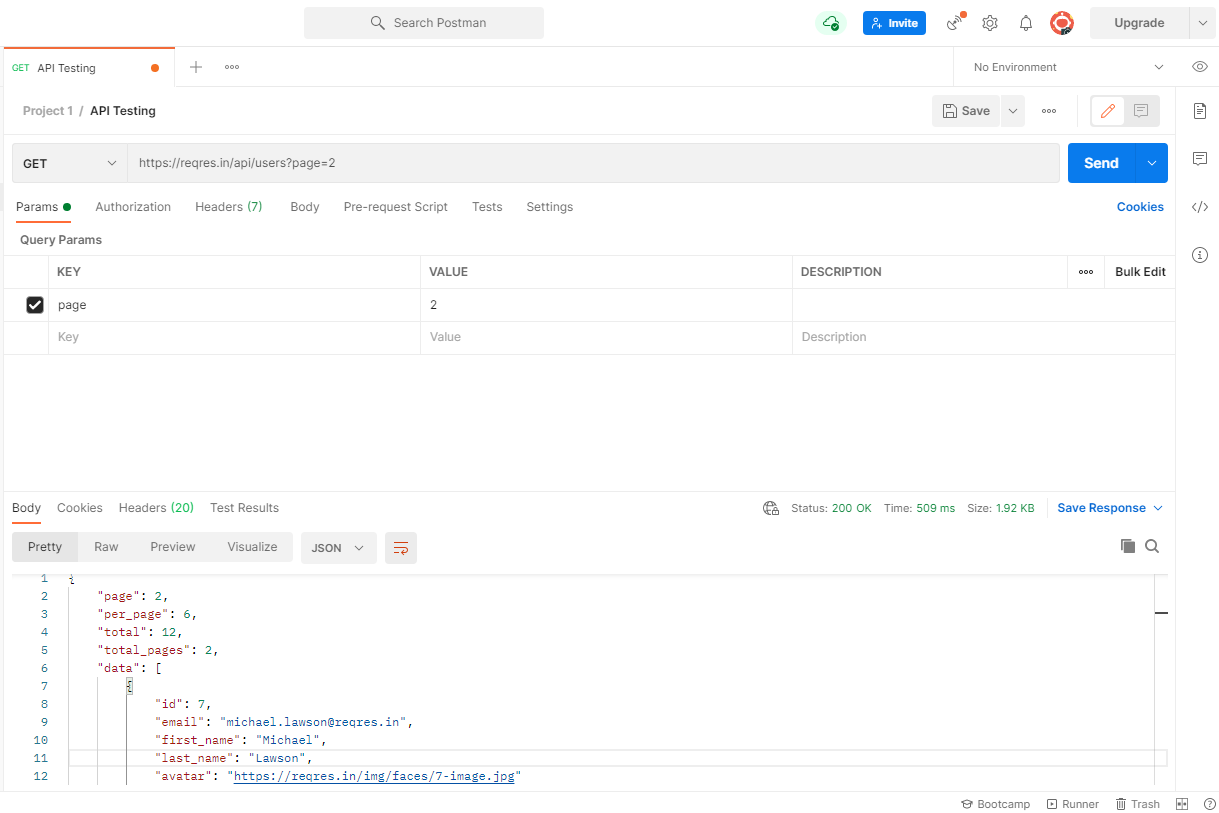
Status Code
So if you take a look at the above image, the HTTP status code is shown to be “200 OK”, which means that everything has worked as expected and that our request is successful.
Time
Right beside the status code, we can see that the time taken to complete the request is 509 ms.
Size
The other available parameter is the size of the requested data, we can see that size is mentioned to be 1.92 KB in the above image.
Note:If we hover the mouse over the time and response values, we will be able to view more details
To save this response, we can simply click on the ‘Save Response’ option.
As stated above, we can also see the body, which is an HTML file in the image. Clicking on the ‘Preview’ option under the body will enable us to view the body in HTML format.
We can click on ‘Cookies’ to view the session-related information and on ‘Headers’ to view other details such as date, content type details, etc.
So by following the above instructions, we have successfully made our first request! Now let’s find out how to send a post request in Postman.
Postman Guide to send a Post Request:
Post is one of the HTTP methods that can be used to add new resources like a webpage and so on. So if we want to create and add a new user to the database, we can utilize the Post request. Likewise, we can also use Post requests for form submissions, authentication requests, and so on.
Let’s see how Post request works:
In Postman, we have an endpoint that responds back whenever we send a request. So, now we are going to send a particular key-value pair in the JSON format to a server.
First, we have to set the HTTP Method to POST.
Next, we have to mention the URL in the address bar.
In the Body tab of the request editor, we should select the ‘Raw’ option and then select JSON from the dropdown list.
We have chosen Raw with JSON as it is one of the most commonly used Post Requests.
So enter the REQUEST in the Body and click on ‘Send’.
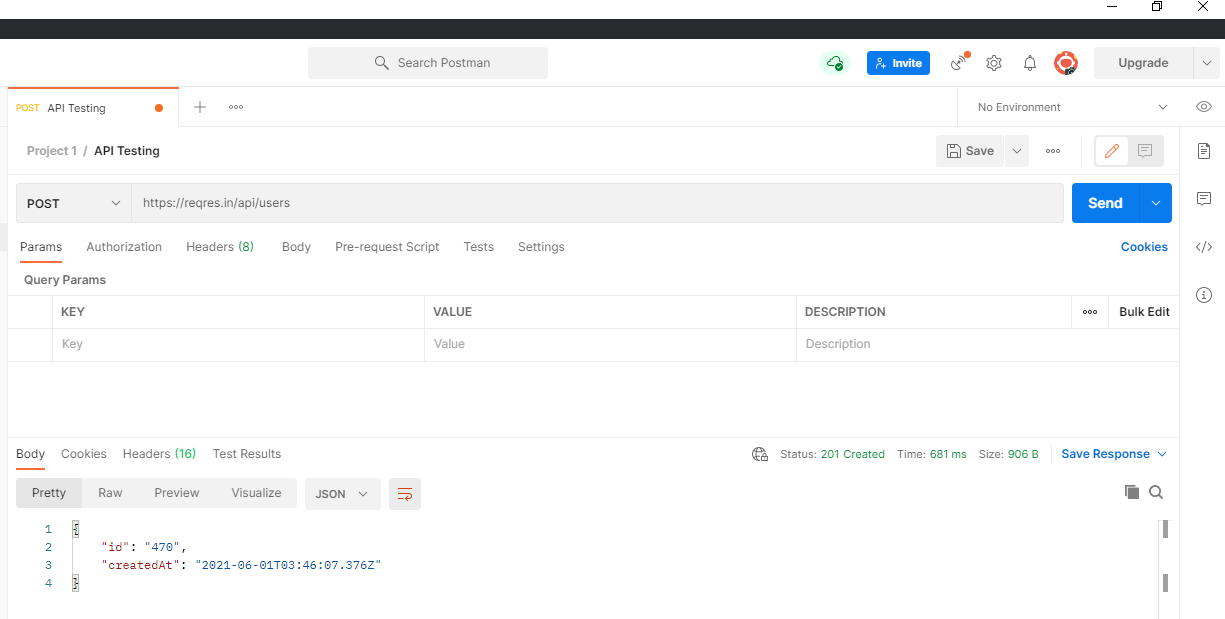
We can see that the user has been created in the above image. In addition to that, we also have the same type of information that we saw earlier that includes status code, time, and so on.
But this time around, we have the status code displayed as 201, which implies that the request has been created.
Click on ‘Save’ to save this request.
‘POST REQUEST’ can be used to add a set of data into the server database. But it is crucial to make sure that the fields are filled with the correct data type, as any incorrect data will result in a 400 Bad Request.
Postman Guide to send a DELETE Request:
Previously, we saw how to send a post request in which we created a user and sent a body. Now let’s see how we can delete a request in Postman. We can use the DELETE HTTP Method to delete an existing record of a user in a database. The expected response in the Status for this is 204.
So primarily, we would have to set the HTTP Method to DELETE, then mention the URL in the address bar, and also mention the final endpoint.
Once the above actions have been completed, we can go ahead and click on ‘Send’.
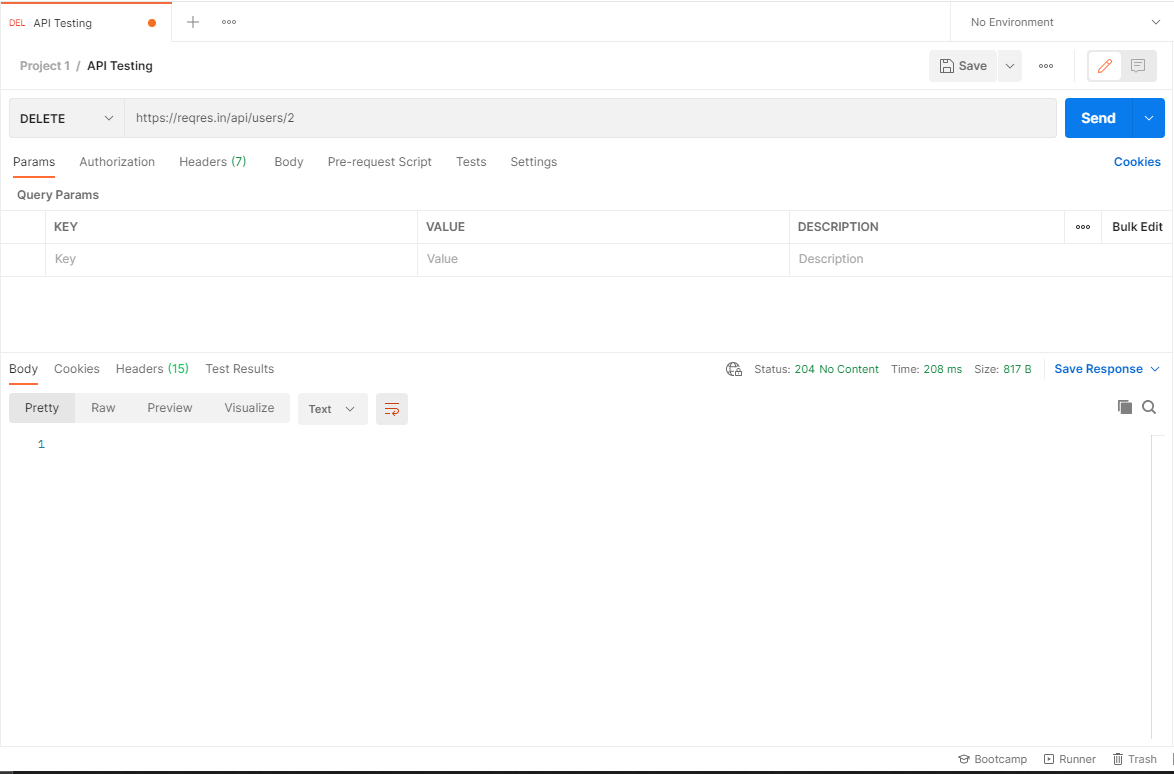
So as expected, we have the Status Code shown as 204, which denotes that the particular resource has been deleted.
But what if the user has some additional parameters? We can pass query parameters and add them to the body section for deleting those resources as well.
Collections
Collections are nothing but a group of requests grouped into a folder. The simplest example of this would be the way we organize the files on our computers or mobile phones. Let’s say we have multiple files of different formats like text files, audio files, video files, etc. We most probably would create new folders and segregate all the files based on their format.
In the same way, we can create different groups using POSTMAN, and each group can have its own type of request. In addition to having the option to create a collection, we will also be able to share this collection with the team members and encourage healthy collaboration. The other advantage is that since we can share the collection, we will also be able to perform various actions like assigning roles, documentation, mock servers, monitors, etc.
Postman Guide to create a collection:
Now that we have seen the purpose of collection, let’s find out how to create one by making use of the following steps.
Click on the ‘New‘ option, then click on ‘Collection’, and enter the Collection Name. We will be able to click on ‘Create’ once we have also added the description of the collection.

Now we can see that we have several options like Run, Share, and so on displayed.
Here we can click on ‘Add Requests’, or replace any existing requests.
Once we click on ‘Run’, a new window will be opened, enabling us to run the collection by clicking on ‘Run My Collection’.
So now we are able to see results for all the requests under the collection, making it evident that we can save an ample amount of time by running multiple requests at a time.
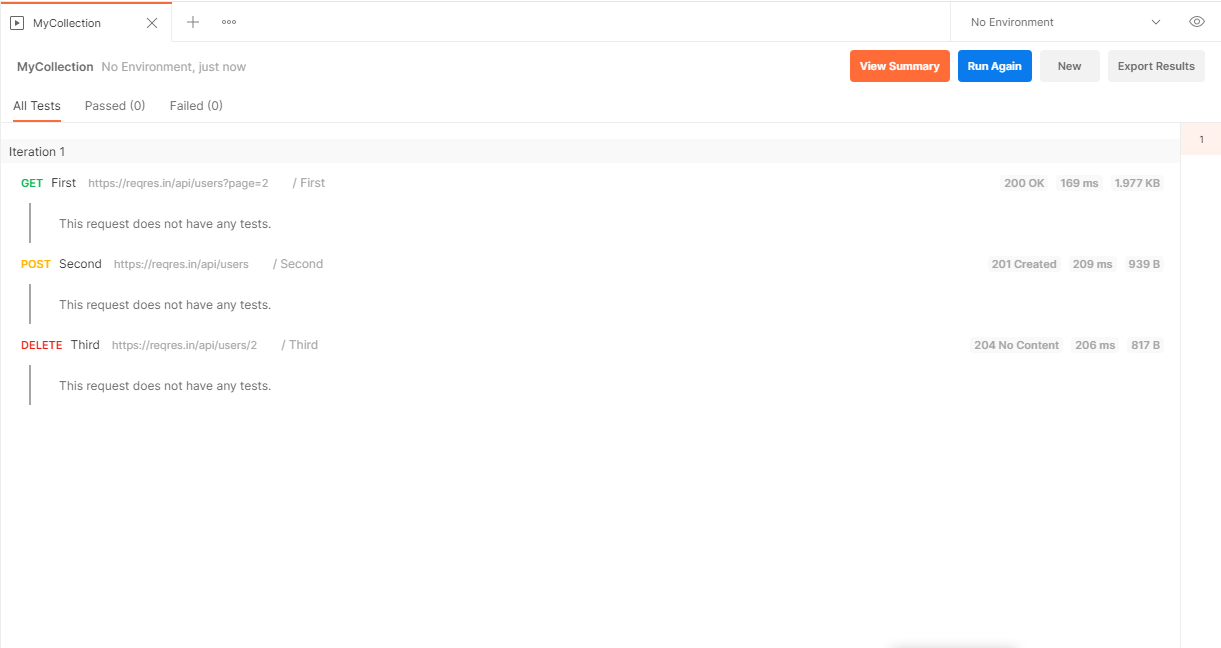
We can click on the ‘Run Again’ option to rerun the collection. Following this, we can click on ‘Export Results’ to export the results as a JSON file. If you take a look at the below image, we can understand that it can be downloaded as well.

Different features of collections
• We can add the collections to favorites.
• It helps users share & assign the roles, create fork & pull requests, and also merge changes.
• We can create a duplicate of collections and export them.
Environment in Postman
It is very important to create distinct environments where one is dedicated for testing, one for development, and another for production. An environment is nothing but a set of variables or key-value pairs which we can be used in our requests. We can also change the value of the variables to pass the data between requests and tests. But how we do create an Environment? Let’s find out.
Postman Guide to create an Environment:
1. First, we have to click on the ‘Environments’ option.
2. Then we have to click on the ‘Add’ icon.
3. We can now enter the Environment name.
4. Followed by which we can enter the variable name to use it with the request.
The initial value is shared with your team when you share the variable in a collection as it will be shared with the collaborators who have access to the environment.

The current value is always used when a request is sent as they are never synced to Postman’s servers. If left untouched, the current value will automatically be assumed as the initial value.
Click on ‘Add’ to create the environment. Once the environment has been created, users can share, copy or even download them if needed.
Global variables in Postman
Global variables allow users to access data between collections, requests, test scripts, and environments. Global variables are not dependent on any environment, making them available for all the requests. They are available throughout the workspace. But on contrary, local variables are available only in particular environments.
When to use Global and Local Variables
When we have multiple key-value pairs which do not depend on any environment, we can make them a Global variable.
Local variables can be used when we have key-value pairs which will change or differ between the environments.
Conclusion:
We hope you have enjoyed reading our Postman Guide for API Testing, as Postman is an effective tool when it comes to API testing. We have just seen the tip of the iceberg here, as these are the most important and basic functionalities every tester must know. As a leading test automation company, we have used Postman in various projects and have always been pleased with its performance. So one can always explore the many more useful functionalities that Postman has to enhance their API testing skills.




























